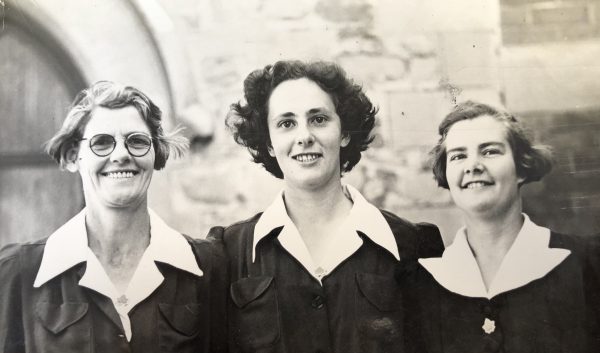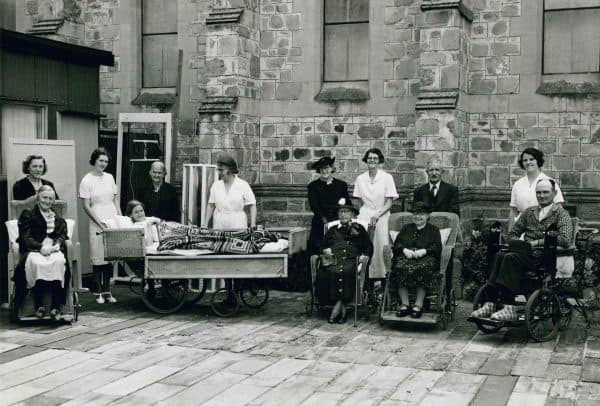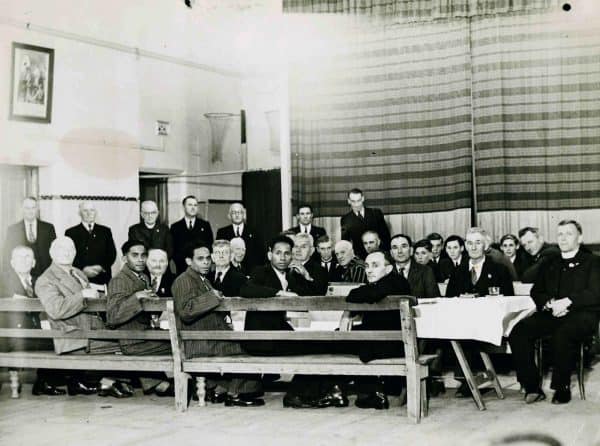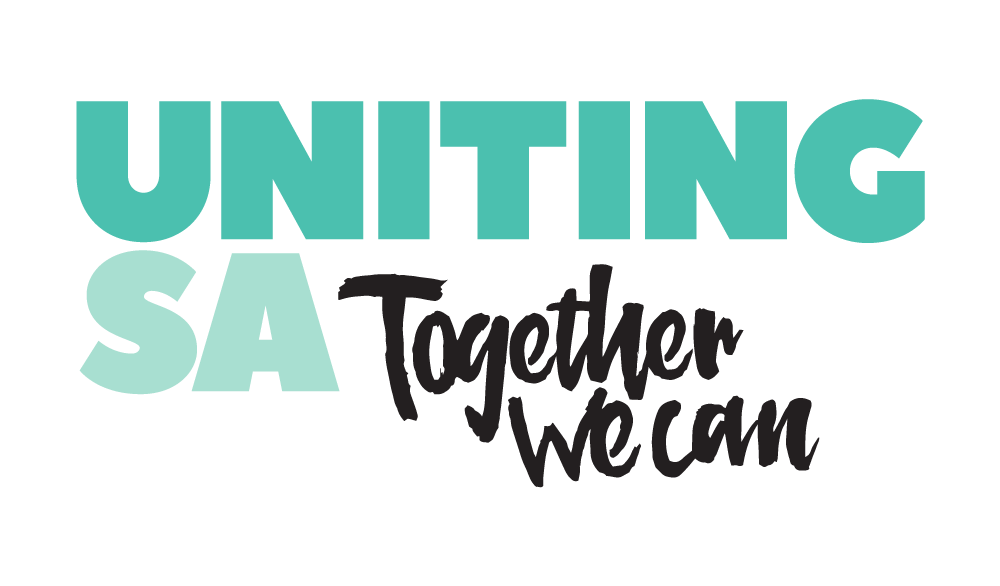
UnitingSA
Through the years
Home » About Us » Since 1919 » Interactive Timeline
Our timeline
1847
1850
1851
1863
1884
1900
1912
1915
1918
1919
1919
1919
1919
1922
1923
1924
1925
1926
1927
1928
1928
1929
1929
1931
1933
1935
1935
1936
1936
1937
1939
1941
1947
1950
1950
1954
1955
1960
1967
1967
1968
1969
1969
1970
1971
1972
1973
1973
1973
1974
1976
1976
1977
1977
1977
1978
1978
1979
1979
1980
1980
1981
1982
1983
1984
1985
1985
1986
1986
1987
1987
1988
1989
1989
1989
1990
1991
1992
1992
1992
1993
1993
1993
1994
1995
1995
1996
1996
1996
1996
1996
1997
1998
1998
1998
1999
1999
2000
2000
2000
2001
2001
2001
2002
2003
2003
2003
2004
2004
2004
2006
2006
2006
2008
2009
2010
2011
2011
2011
2012
2012
2013
2013
2014
2014
2015
2016
2016
2016
2016
2017
2017
2018
2018
2018
2018
2019
2019
2021
2021
2021
2022
2022
2023
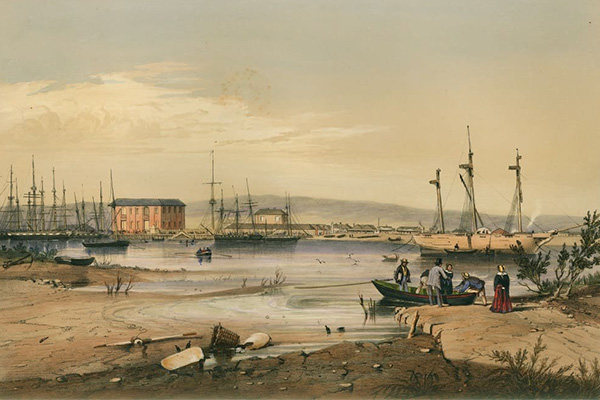
The Beginning
In the beginning, combined services of worship were shared by all denominations in Port Adelaide, with parishioners walking up to 20 miles on a Sunday to hear the gospel.
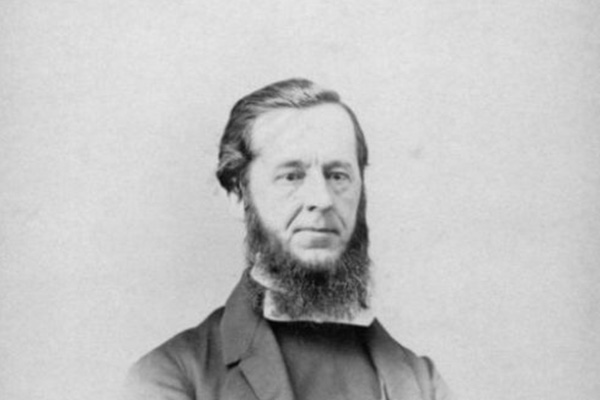
Local Wesleyan Methodist Services Begin
In 1850 the North Adelaide Circuit of the Wesleyan Methodists appointed Reverend C. H. Goldsmith to preach in the Port Adelaide area.
The local merchant opened his home on Lipson Street for divine service - the first separate service of the Wesleyan Methodist Church in the Port.
Goldsmith’s home soon became too small and a shed near the wharf was secured for services.
The local merchant opened his home on Lipson Street for divine service - the first separate service of the Wesleyan Methodist Church in the Port.
Goldsmith’s home soon became too small and a shed near the wharf was secured for services.
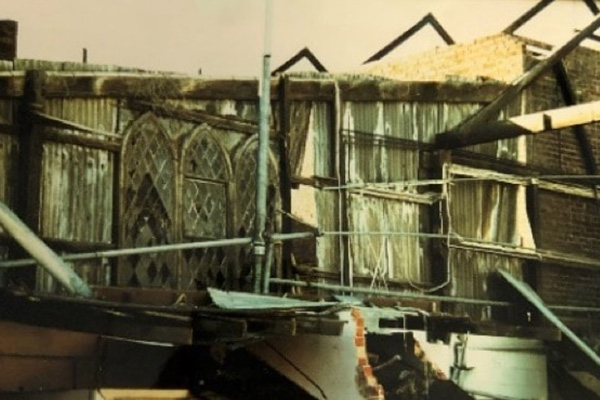
The Port's first Wesleyan Church
The foundation stone for Port Adelaide’s first Wesleyan Methodist Church was laid in Quebec Street on 20 January 1851 by Reverend Goldsmith.
The church opened on 5 October with a morning service conducted by Reverend Daniel James Draper.
Reverend James Haslam was appointed the first Wesleyan minister to the Port.
The church opened on 5 October with a morning service conducted by Reverend Daniel James Draper.
Reverend James Haslam was appointed the first Wesleyan minister to the Port.
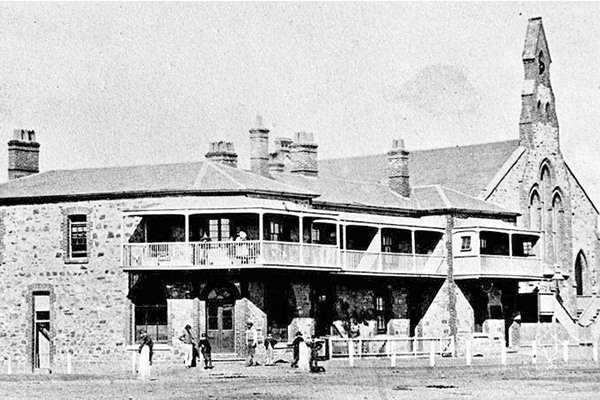
Church moves to the heart of the Port
The congregations increased so significantly that in 1863 a larger church was built on St Vincent Street, opposite the town hall.
Opening on 21 November, the centrally-placed church was a major feature of the Port, with a large group of adherents including 210 Sunday school scholars.
Services continued at St Vincent Street until 1885, when the church was vacated due to the noise of passing trains and rising tides which flooded the basement.
Opening on 21 November, the centrally-placed church was a major feature of the Port, with a large group of adherents including 210 Sunday school scholars.
Services continued at St Vincent Street until 1885, when the church was vacated due to the noise of passing trains and rising tides which flooded the basement.
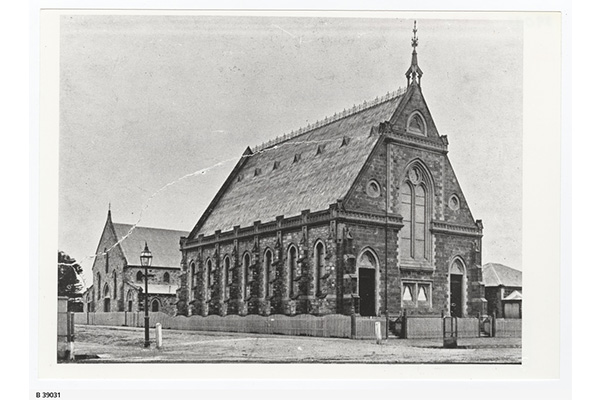
Presence on Dale Street begins
In 1884 construction of a new Wesleyan Methodist Church and other buildings commenced on Dale Street, Port Adelaide – a fashionable residential area.
The new buildings included a lecture hall, eight classrooms and a caretaker’s cottage.
The foundation stone for the church was laid on 22 September by Premier of South Australia, the Hon. John Colton.
The church opened on 6 March 1885.
The new buildings included a lecture hall, eight classrooms and a caretaker’s cottage.
The foundation stone for the church was laid on 22 September by Premier of South Australia, the Hon. John Colton.
The church opened on 6 March 1885.
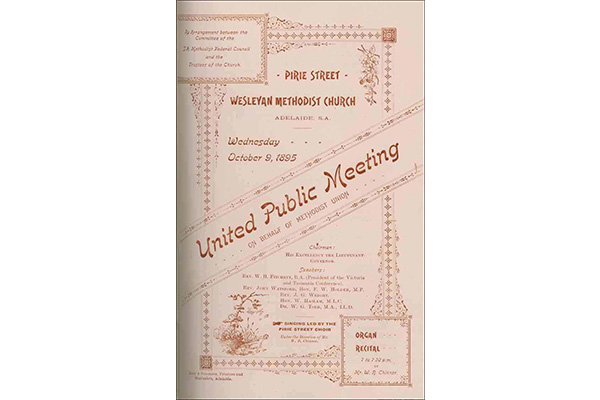
SA's Methodist congregations unite
In South Australia, 1900 marked the year of the Methodist union. After 20 years of debate, the state’s three primary branches of Methodism – Wesleyan, Bible Christian and Primitive – came together to form one united Methodist Church.
At the first Methodist Conference on 1 January, Port Adelaide – formerly part of the North Adelaide Circuit – became the centre of its own circuit. At this time, almost one quarter of the SA population was Methodist.
At the first Methodist Conference on 1 January, Port Adelaide – formerly part of the North Adelaide Circuit – became the centre of its own circuit. At this time, almost one quarter of the SA population was Methodist.
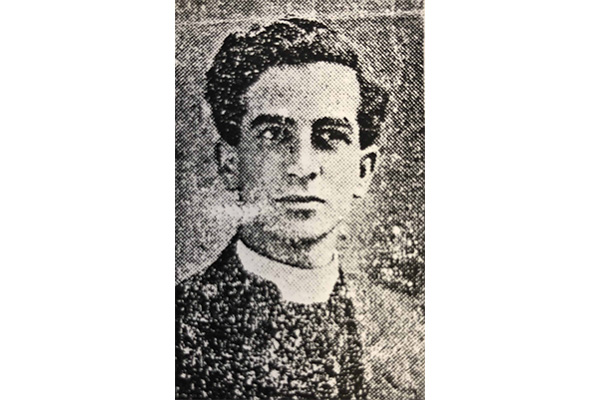
Formation of the Mission debated
Amidst declining membership at the Port Adelaide Methodist Church and worsening economic conditions, a number of unsuccessful attempts were made to establish the church as a ‘Central Mission’.
Proposals to make the church a Mission were voted down at South Australian Methodist Church Conferences in 1912 and 1917.
In 1917, Port Adelaide Methodist Minister Reverend Robert Stanley drew attention to marked social changes in the area that he believed necessitated a mission.
Proposals to make the church a Mission were voted down at South Australian Methodist Church Conferences in 1912 and 1917.
In 1917, Port Adelaide Methodist Minister Reverend Robert Stanley drew attention to marked social changes in the area that he believed necessitated a mission.
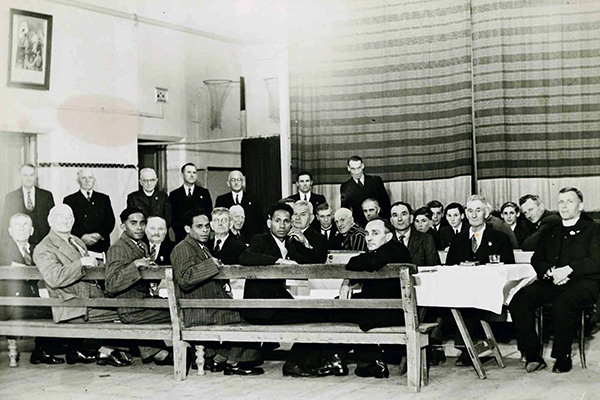
Men's Brotherhood founded
It was becoming evident that a growing number of local unemployed men needed support so in 1915 Port Adelaide Methodist Church Minister Reverend Stanley established a Men’s Brotherhood.
Held on the first Sunday of each month, a Men’s Brotherhood dinner brought together a large number of men and was usually followed by addresses and films.
The Brotherhood focused on the crowds of bored unemployed men “thronging the streets of the Port”.
Attendances in 1919 averaged 60 men.
Held on the first Sunday of each month, a Men’s Brotherhood dinner brought together a large number of men and was usually followed by addresses and films.
The Brotherhood focused on the crowds of bored unemployed men “thronging the streets of the Port”.
Attendances in 1919 averaged 60 men.
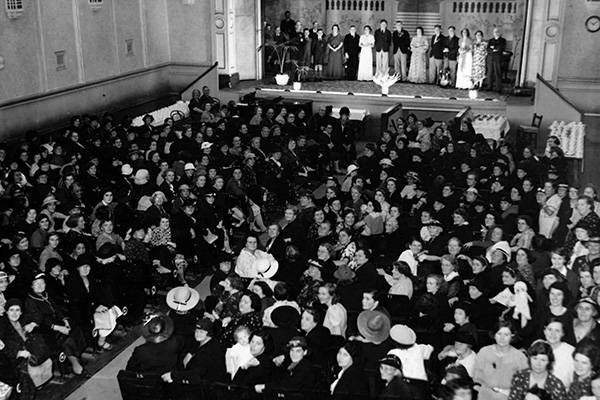
Women's Bright Hour provides hope
In 1917, the Port Adelaide Methodist Church established the Women’s Bright Hour to help local women who, through distress or poverty, were unable to attend ordinary religious services.
The fortnightly Bright Hour meetings were loosely structured like a service of worship, but included songs, competitions and addresses rather than sermons.
Bright Hour became very popular, raising the morale of its women members in hard times.
As at 1937, 500 members were registered.
The fortnightly Bright Hour meetings were loosely structured like a service of worship, but included songs, competitions and addresses rather than sermons.
Bright Hour became very popular, raising the morale of its women members in hard times.
As at 1937, 500 members were registered.
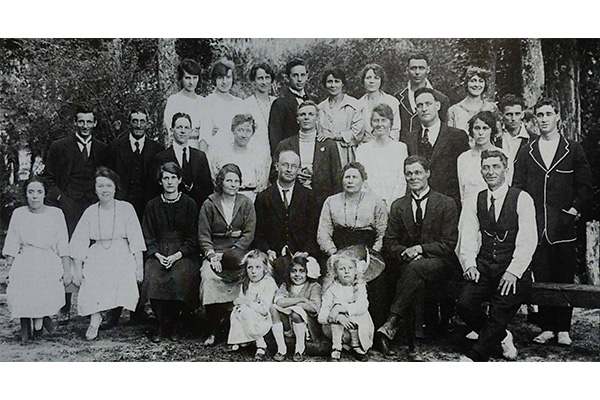
The Port Mission comes to life
In 1919 the Port Adelaide Methodist Church finally gained permission from the Methodist Conference to adopt the style of a Central Mission.
It was hoped the Mission would help address heightened levels of poverty and social problems facing the Port, as well as enlarge congregations.
The first meeting of the Port Adelaide Central Methodist Mission was held on 8 April 1919, with Reverend Fredrick Brasher appointed Superintendent.
The formation of the Mission came amid a time of drought, war and soaring unemployment.
Brasher served for four years.
It was hoped the Mission would help address heightened levels of poverty and social problems facing the Port, as well as enlarge congregations.
The first meeting of the Port Adelaide Central Methodist Mission was held on 8 April 1919, with Reverend Fredrick Brasher appointed Superintendent.
The formation of the Mission came amid a time of drought, war and soaring unemployment.
Brasher served for four years.
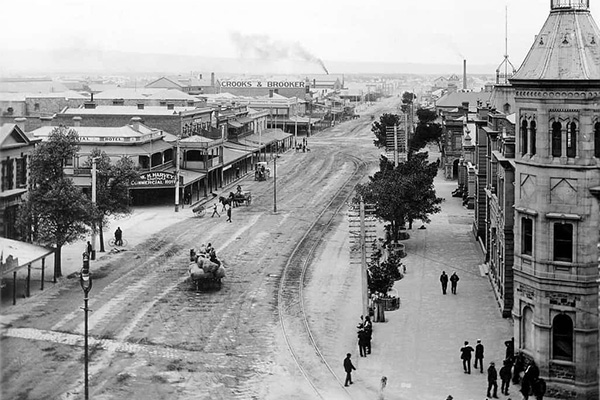
Campaign upholds six o'clock swill
Unemployment and an inadequate welfare system wrought havoc on families in the Port.
Many sought solace in alcohol, leaving little money for food and clothing.
The Mission witnessed first-hand the hardship caused by excessive alcohol consumption, which coloured their attitude towards the hotel trade.
The Mission vigorously supported the SA campaign to uphold the six o’clock closing rule introduced during the war, believing it was one of the few ways it could address the causes of misery surrounding it.
A “monster petition” was collected in mid-1919, with Mission staff visiting every home in the district.
Many sought solace in alcohol, leaving little money for food and clothing.
The Mission witnessed first-hand the hardship caused by excessive alcohol consumption, which coloured their attitude towards the hotel trade.
The Mission vigorously supported the SA campaign to uphold the six o’clock closing rule introduced during the war, believing it was one of the few ways it could address the causes of misery surrounding it.
A “monster petition” was collected in mid-1919, with Mission staff visiting every home in the district.
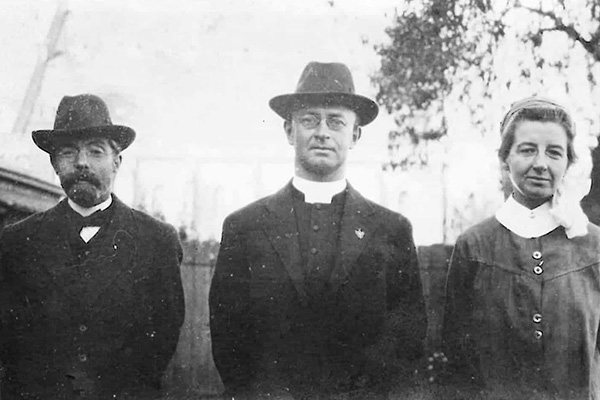
Lovell appointed first Sister of the People
Faced with rising community need, the Mission raised funds to employ a ‘Sister of the People’ – a term adopted by Methodism for its paid female workers who undertook relief work.
Somewhat a religious social worker, Miss Edith Lovell commenced duties as the Mission’s first Sister of the People in August 1919.
Her work included seeking donations, helping women with family budgeting, conducting home visits to distribute aid and caring for the ill.
In particular, Sister Edith tended to people stricken by the world-wide influenza epidemic.
Somewhat a religious social worker, Miss Edith Lovell commenced duties as the Mission’s first Sister of the People in August 1919.
Her work included seeking donations, helping women with family budgeting, conducting home visits to distribute aid and caring for the ill.
In particular, Sister Edith tended to people stricken by the world-wide influenza epidemic.
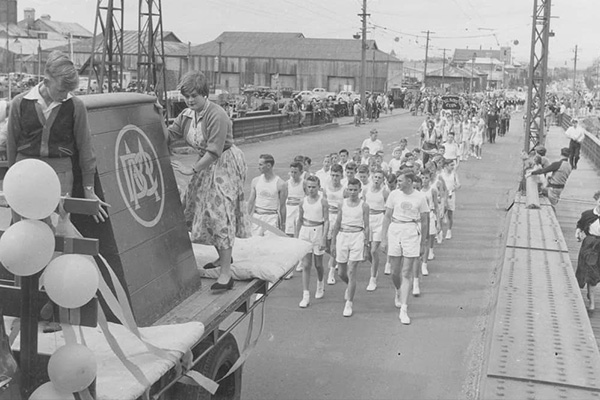
All Boys Club provides positive influence
In 1919 the Mission established an All Boys Club to support the physical and spiritual development of boys in the Port, who were thought to be in greater need than girls.
It was hoped the club would provide a healthy influence for boys whose home life was “not sufficiently attractive to keep them off the streets”.
Held on Tuesday nights at Dale Street, the club saw boys engage in gymnastics, boxing, wrestling, meetings with guest speakers, special outings and camps.
In December 1919 the club was attracting about 80 boys.
It was hoped the club would provide a healthy influence for boys whose home life was “not sufficiently attractive to keep them off the streets”.
Held on Tuesday nights at Dale Street, the club saw boys engage in gymnastics, boxing, wrestling, meetings with guest speakers, special outings and camps.
In December 1919 the club was attracting about 80 boys.
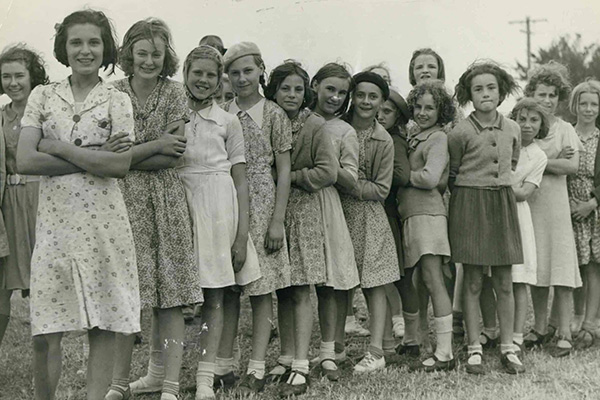
Sunday School hall opens
In the four years to 1920, attendance at the Mission’s Sunday School had grown from 141 children to 183.
Concerned about overcrowding, the Mission raised funds to build a new hall for Sunday School on the Dale Street site.
With memory of the war still fresh, the new building was called a ‘memorial hall’ to encourage donations.
The hall’s grand opening was held on 13 May 1922.
Concerned about overcrowding, the Mission raised funds to build a new hall for Sunday School on the Dale Street site.
With memory of the war still fresh, the new building was called a ‘memorial hall’ to encourage donations.
The hall’s grand opening was held on 13 May 1922.
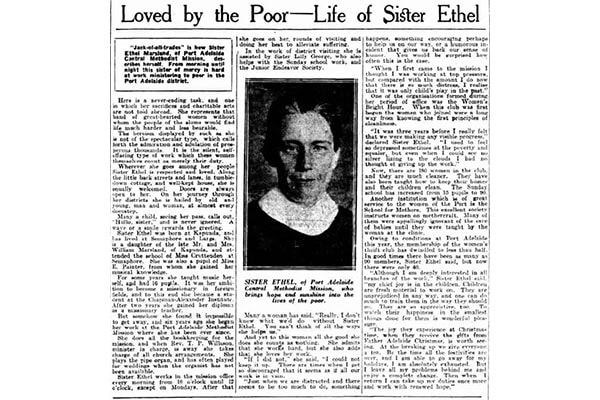
Sister Ethel and Humphery appointed
The Mission’s next Sister of the People, Ethel Marsland, was appointed in 1923 – the same year that Reverend Fred Humphery succeeded Brasher as Superintendent.
Serving at the Mission for a decade, Sister Ethel's work included visiting the sick, distributing aid and assisting in the kindergarten, where she enjoyed her greatest passion of working with children.
During Sister Ethel’s time, the Mission’s relief department came under increasing strain as the result of sickness, unemployment and family breakdowns.
Warm clothing, meals, wood and shelter were in high demand.
Humphery served for one year.
Serving at the Mission for a decade, Sister Ethel's work included visiting the sick, distributing aid and assisting in the kindergarten, where she enjoyed her greatest passion of working with children.
During Sister Ethel’s time, the Mission’s relief department came under increasing strain as the result of sickness, unemployment and family breakdowns.
Warm clothing, meals, wood and shelter were in high demand.
Humphery served for one year.
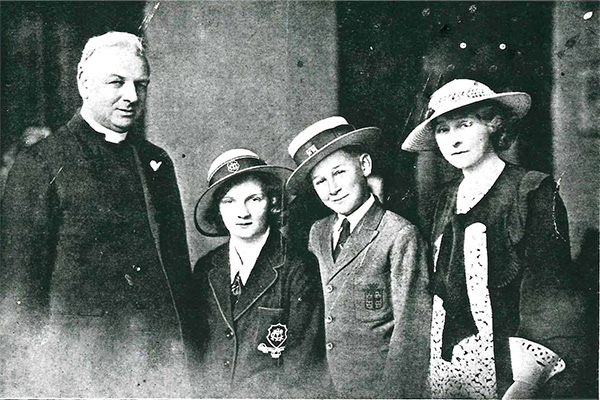
‘Unconventional parson’ appointed
Reverend T. P. Willason, born in Ireland, was appointed Superintendent of the Mission in April 1924.
In his time as Superintendent, Willason expanded the Mission’s youth programs and delivered Sunday services on the main street and at the Ozone Picture Theatre to attract non-church goers.
He had a strong relationship with wharf labourers, owing to his career in the sailing industry.
Willason served as superintendent until 1935.
In his time as Superintendent, Willason expanded the Mission’s youth programs and delivered Sunday services on the main street and at the Ozone Picture Theatre to attract non-church goers.
He had a strong relationship with wharf labourers, owing to his career in the sailing industry.
Willason served as superintendent until 1935.
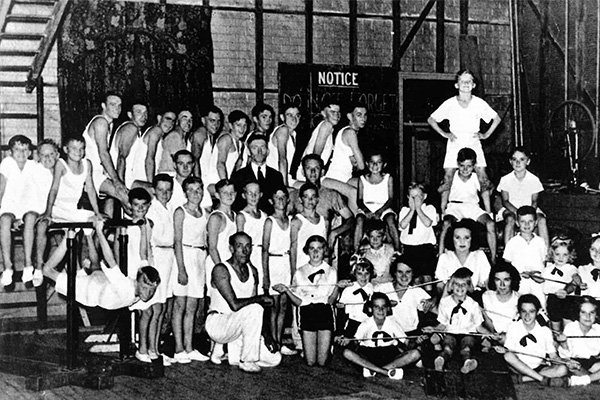
Formation of All Girls Club
Following the success of the All Boys Club, an All Girls Club and Gymnasium was established along similar lines in 1925.
It met on Monday evenings under the leadership of church ladies and the Sister of the People.
Growth in youth activities was an indication of preventative work supplementing the emergency assistance provided by the Mission.
These activities were a commitment to what would later be called community development.
It met on Monday evenings under the leadership of church ladies and the Sister of the People.
Growth in youth activities was an indication of preventative work supplementing the emergency assistance provided by the Mission.
These activities were a commitment to what would later be called community development.
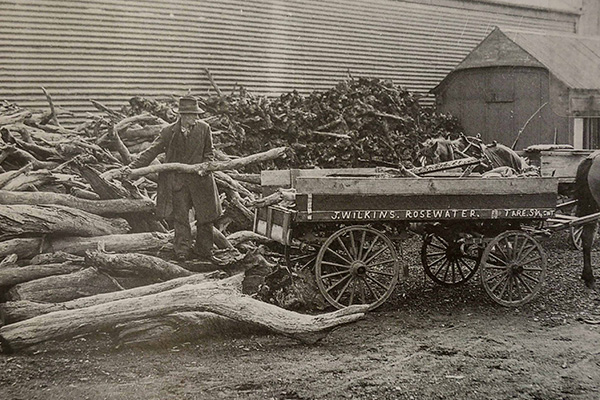
Aid provides welcome relief in cold winter
In the winter of 1926, confronted by a long season of unemployment, the Port Adelaide Council and Destitute Board (later the Public Relief Department) asked for the Mission’s help in collecting and distributing material aid.
Bread and firewood flowed in and swiftly out again.
Regular relief donations, including wood from Pinnaroo, were transported by ‘Messrs Rofe and Company’ free of charge to those in need.
Bread and firewood flowed in and swiftly out again.
Regular relief donations, including wood from Pinnaroo, were transported by ‘Messrs Rofe and Company’ free of charge to those in need.
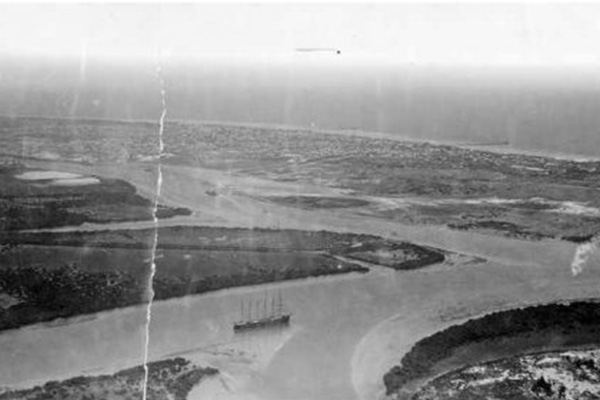
Economic depression hits the Port
Severe economic depression struck SA in the late 1920s, with thousands of people thrown out of work and families slipping into poverty.
While SA had one of the country’s highest unemployment rates, many did not approach the government as they perceived there to be ‘deserving’ and ‘undeserving poor’.
The Mission stepped in to support those who fell through the cracks.
Due to the intensity of problems in the Port, a second Sister of the People, Lily George, was appointed in 1927.
Sister George helped with home visits, the Sunday school and undertook intensive work with young people.
While SA had one of the country’s highest unemployment rates, many did not approach the government as they perceived there to be ‘deserving’ and ‘undeserving poor’.
The Mission stepped in to support those who fell through the cracks.
Due to the intensity of problems in the Port, a second Sister of the People, Lily George, was appointed in 1927.
Sister George helped with home visits, the Sunday school and undertook intensive work with young people.
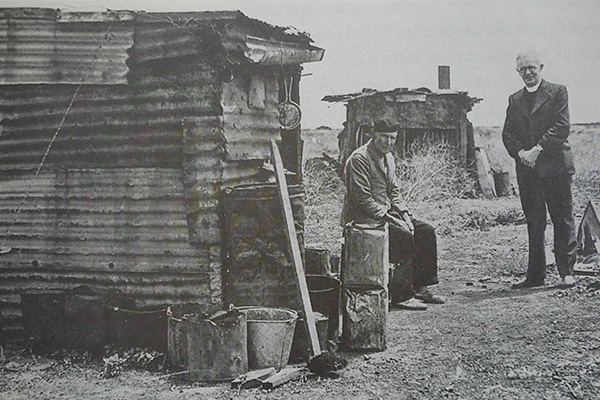
Men’s camp shelters the unemployed
The problem of unemployment sharpened in the Port and the Mission’s resources were placed under increasing strain.
With the aid of the Mission, a camp of some 70 unemployed men was established at New Kingston near Rosewater by early 1928.
The Mission gave men living at the camp fresh food and whatever other help could be afforded.
Dismayed by cuts in government rations, Willason said: “These men are not lazy or unemployable, but anxious for work of any kind, and willing to go to Timbuctoo to obtain it”.
With the aid of the Mission, a camp of some 70 unemployed men was established at New Kingston near Rosewater by early 1928.
The Mission gave men living at the camp fresh food and whatever other help could be afforded.
Dismayed by cuts in government rations, Willason said: “These men are not lazy or unemployable, but anxious for work of any kind, and willing to go to Timbuctoo to obtain it”.
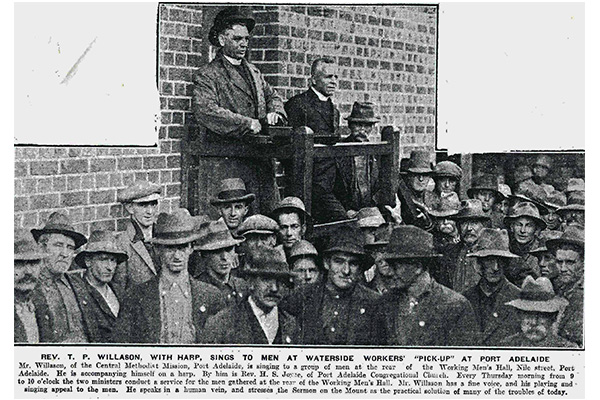
Waterside Workers turn to the Mission
Shipping companies around Australia were slugging it out with the Waterside Workers Federation (WWF) in a series of bruising disputes in 1928.
Waterside workers rejected the industry award that was handed down, and WWF branches around the nation protested by striking.
All this strife made matters worse for the Mission, as striking workers meant more starving families.
At the request of waterside workers, Willason held weekly sermons at the wharf and sang to the men while playing the harp to lift their spirits.
Waterside workers rejected the industry award that was handed down, and WWF branches around the nation protested by striking.
All this strife made matters worse for the Mission, as striking workers meant more starving families.
At the request of waterside workers, Willason held weekly sermons at the wharf and sang to the men while playing the harp to lift their spirits.
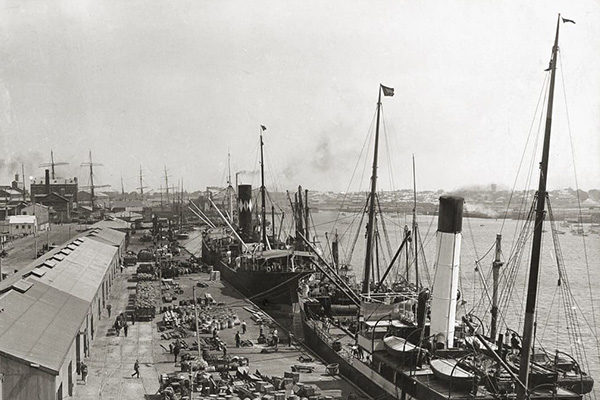
Willason leads unemployment response
Matters for people of the Port worsened in 1929, with the onslaught of a worldwide monetary collapse leading to a further dramatic rise in unemployment.
According to the Commonwealth Census, the Port district contained 14,739 males of whom 8,511 were employed.
The colossal army of unemployed and an unstable shipping industry – reeling from a contraction in overseas sales – crippled the local economy.
The government called on Mission Superintendent Willason to investigate educational methods and unemployment problems while on a trip to New Zealand.
According to the Commonwealth Census, the Port district contained 14,739 males of whom 8,511 were employed.
The colossal army of unemployed and an unstable shipping industry – reeling from a contraction in overseas sales – crippled the local economy.
The government called on Mission Superintendent Willason to investigate educational methods and unemployment problems while on a trip to New Zealand.
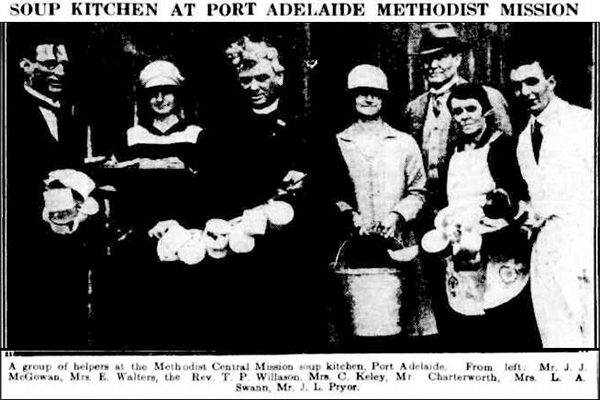
Soup kitchen feeds children of the Port
In the winters of 1929 and 1930, Mission workers ran a soup kitchen for needy children at the old Marist Brothers school site on Commercial Road.
The soup kitchen was sustained by gifts solicited through the Australian Christian Commonwealth newspaper, the labours of volunteers, visiting dignitaries and radio appeals.
The soup kitchen was sustained by gifts solicited through the Australian Christian Commonwealth newspaper, the labours of volunteers, visiting dignitaries and radio appeals.
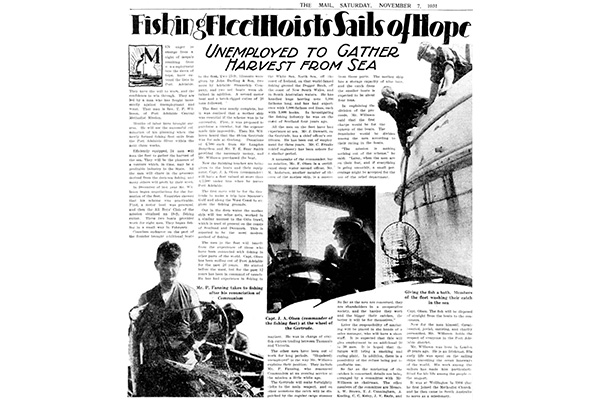
Fishing fleet combats unemployment
In late 1930 the Mission embarked on its most ambitious Depression response project – a fishing fleet to provide work for men and food for families.
Mission Superintendent Reverend Willason was concerned that many were going hungry, despite a significant number of unemployed men having fishing and shipping experience.
The breakthrough for the scheme came when philanthropists Sir Langdon Bonython and Tom Barr Smith funded the purchase of a metal hulled fishing steamer, The Gertrude.
By December 1931 The Gertrude was in the Great Australian Bite with a crew of 150 men, returning a month later with 30 tons of fish.
At her peak, The Gertrude went out on fortnightly trips, but was rested in 1934 when the venture was no longer deemed viable.
Mission Superintendent Reverend Willason was concerned that many were going hungry, despite a significant number of unemployed men having fishing and shipping experience.
The breakthrough for the scheme came when philanthropists Sir Langdon Bonython and Tom Barr Smith funded the purchase of a metal hulled fishing steamer, The Gertrude.
By December 1931 The Gertrude was in the Great Australian Bite with a crew of 150 men, returning a month later with 30 tons of fish.
At her peak, The Gertrude went out on fortnightly trips, but was rested in 1934 when the venture was no longer deemed viable.
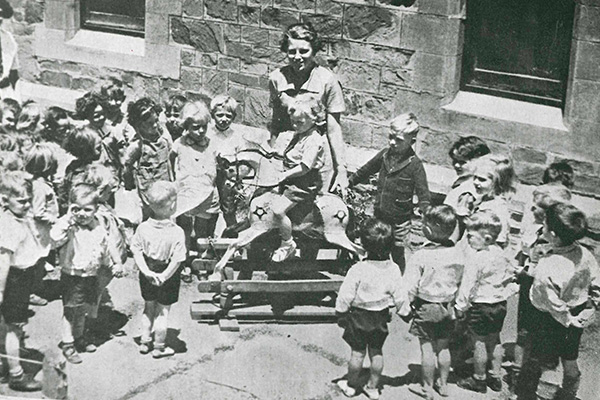
Free kindergarten caters for all
In October 1933 the Mission opened a free kindergarten, a service usually only available to middle-class society who could afford the fees.
The kindergarten was opened by wife of the Governor of SA, Lady Hore-Ruthven.
The kindergarten aimed to provide children aged between two and six with an environment for “good companionship, reverence, thoughtfulness for others, neatness, resourcefulness and general usefulness”.
The kindergarten was opened by wife of the Governor of SA, Lady Hore-Ruthven.
The kindergarten aimed to provide children aged between two and six with an environment for “good companionship, reverence, thoughtfulness for others, neatness, resourcefulness and general usefulness”.
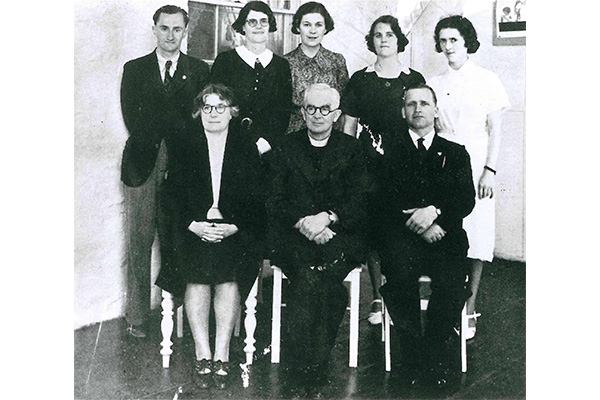
McCutcheon appointed Superintendent
Reverend A. D. McCutcheon was appointed Superintendent of the Mission in 1935.
Under his leadership, an employment agency, second-hand clothing distribution point, health clinic and home for the aged were developed.
McCutcheon's personal response to local need also included serving as a Royal Australian Naval Reserve chaplain to the Port naval depot and as a probation officer at the local court.
He spoke at the Methodist Conference on ‘Christian Responsibility for the Social Order’, signifying a shift in the Mission’s purpose from providing a place of worship to social responsibility.
Described as a ‘surgeon of souls’, McCutcheon held the position until 1954.
Under his leadership, an employment agency, second-hand clothing distribution point, health clinic and home for the aged were developed.
McCutcheon's personal response to local need also included serving as a Royal Australian Naval Reserve chaplain to the Port naval depot and as a probation officer at the local court.
He spoke at the Methodist Conference on ‘Christian Responsibility for the Social Order’, signifying a shift in the Mission’s purpose from providing a place of worship to social responsibility.
Described as a ‘surgeon of souls’, McCutcheon held the position until 1954.
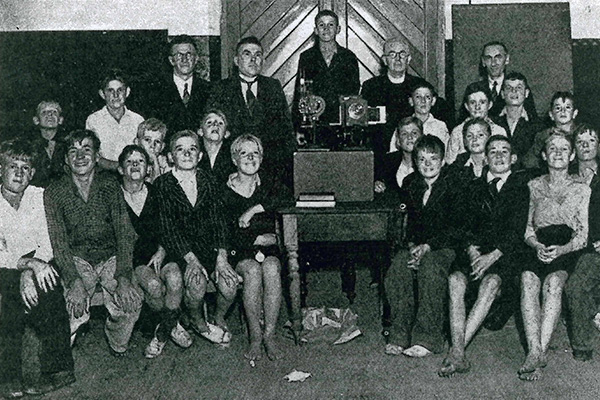
Cinema Church keeps children safe
In 1935 the Mission started a ‘Children’s Cinema Church’ initiative which used visual mediums to teach moral lessons and social responsibility to young people.
This creative exercise was the first of its kind in Australia and received praise from the police and community for keeping children away from the streets of the Port, which were often a place of crime and bad choices.
The cinema was frequently at capacity.
This creative exercise was the first of its kind in Australia and received praise from the police and community for keeping children away from the streets of the Port, which were often a place of crime and bad choices.
The cinema was frequently at capacity.
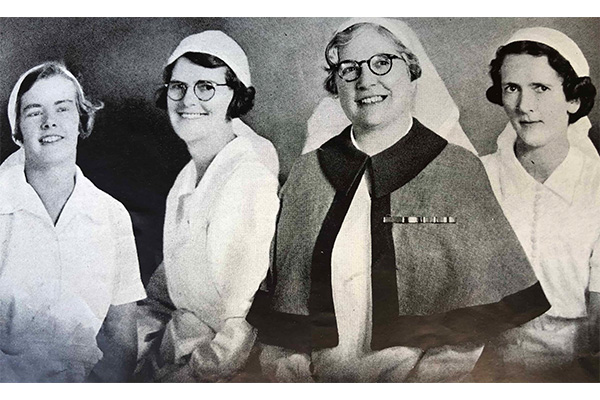
Health clinic brings healing
In 1936 the Superintendent’s wife, Mrs Mable McCutcheon MBE, founded a health clinic, which would go on to treat many thousands of people.
Operating from a cottage on Dale Street, the Mission’s clinic sought to bring healing and comfort through physiotherapy, chiropody and post-polio treatment.
Persons unable to make payment were entitled to all services free of charge.
Even doctors referred patients to the clinic, which also featured in the Australian Women’s Weekly.
In 1950 alone, there were 14,351 patients with over 34,000 treatments given.
Operating from a cottage on Dale Street, the Mission’s clinic sought to bring healing and comfort through physiotherapy, chiropody and post-polio treatment.
Persons unable to make payment were entitled to all services free of charge.
Even doctors referred patients to the clinic, which also featured in the Australian Women’s Weekly.
In 1950 alone, there were 14,351 patients with over 34,000 treatments given.
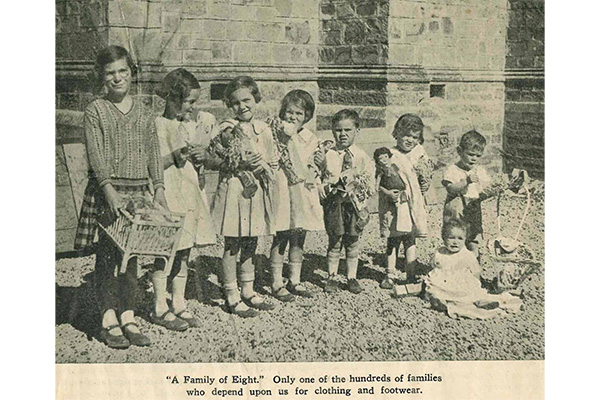
Christmas appeal responds to need
In 1936, the Mission launched one of its first Christmas appeals.
A sheet drive aimed to collect 500 new sheets for families of the Port.
In February that year McCutcheon wrote in the Australian Christian Commonwealth that the Mission assisted over 60 families each week.
A sheet drive aimed to collect 500 new sheets for families of the Port.
In February that year McCutcheon wrote in the Australian Christian Commonwealth that the Mission assisted over 60 families each week.
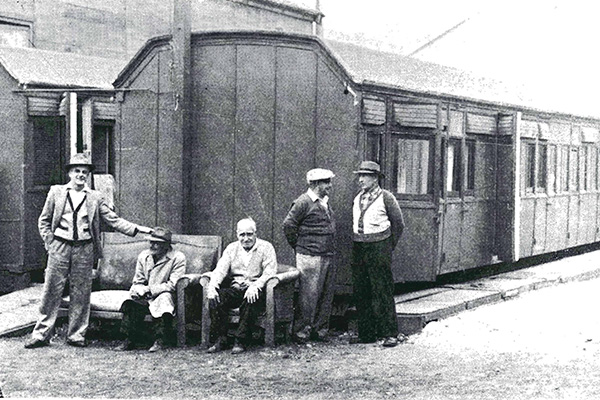
Hostel provides shelter to homeless men
In 1937 – at the height of economic recession, the Mission converted its old Dale Street manse into a men’s hostel.
When appealing to the public for donations, Superintendent McCutcheon spoke of around 70 homeless men living in hessian and tin shelters and others on the beach.
Formally home to the Mission’s superintendents, the manse was a double storied building with 10 rooms.
Four railways carriages converted into sleeping quarters later added to this.
In 1941 alone, no less than 7,760 beds and 17,800 meals were freely given.
When appealing to the public for donations, Superintendent McCutcheon spoke of around 70 homeless men living in hessian and tin shelters and others on the beach.
Formally home to the Mission’s superintendents, the manse was a double storied building with 10 rooms.
Four railways carriages converted into sleeping quarters later added to this.
In 1941 alone, no less than 7,760 beds and 17,800 meals were freely given.
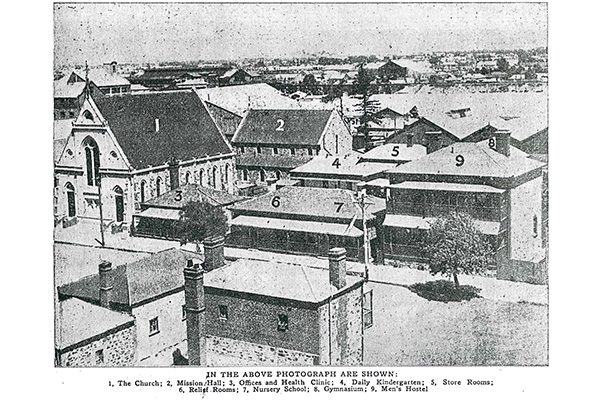
Expansion continues with unwavering demand
As at June 1939, the Mission had 10 buildings on Dale Street, including a church, hall, offices, health clinic, kindergarten, store rooms, relief rooms, nursery school, gymnasium and men’s hostel.
Although unemployment had reduced with many going to fight in WWII, there was still a high demand for the Mission’s services.
By 1944 the Mission ran 19 activities, which ranged from a boot repair shop and second hand clothing department to a court probation office and Men’s Social Centre.
Although unemployment had reduced with many going to fight in WWII, there was still a high demand for the Mission’s services.
By 1944 the Mission ran 19 activities, which ranged from a boot repair shop and second hand clothing department to a court probation office and Men’s Social Centre.
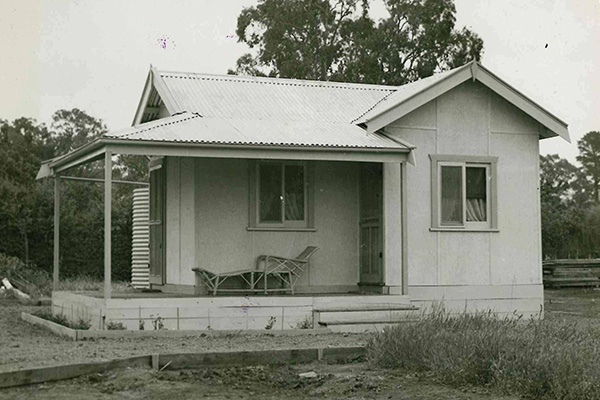
Health Camp provides respite to mothers
In 1941 the Mission created a Health Camp scheme to support ‘poor tired mothers’ from the Port.
Two houses, known as ‘health cottages’, were erected in Mount Barker.
The cottages provided respite for families who lived in industrial areas, but who through want and poverty never had an opportunity to live in restful surroundings.
The Health Camp was set up to “safeguard the health and happiness of some poor mother and her bairns”.
Two houses, known as ‘health cottages’, were erected in Mount Barker.
The cottages provided respite for families who lived in industrial areas, but who through want and poverty never had an opportunity to live in restful surroundings.
The Health Camp was set up to “safeguard the health and happiness of some poor mother and her bairns”.
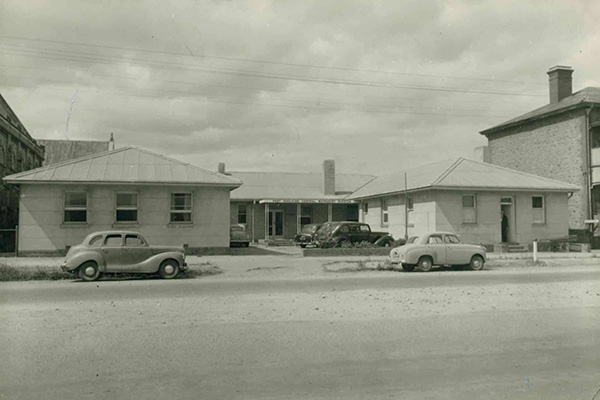
Health clinic undergoes rapid expansion
Having outgrown the cottage, in 1946 the Mission constructed a new building for its health clinic.
Opening in 1947, the site was named in honour of its founder Mrs McCutcheon MBE.
The new clinic building brought about a rapid increase in work and by 1949 the site was already proving too small.
In this same year a new wing was built to support the heavy demands.
In 1949/50, 13,351 patients were treated at the clinic.
Opening in 1947, the site was named in honour of its founder Mrs McCutcheon MBE.
The new clinic building brought about a rapid increase in work and by 1949 the site was already proving too small.
In this same year a new wing was built to support the heavy demands.
In 1949/50, 13,351 patients were treated at the clinic.
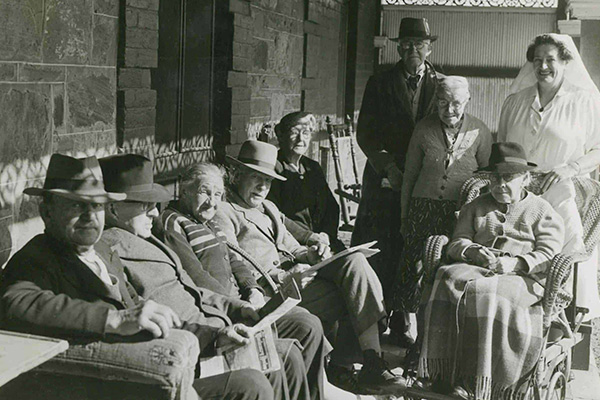
The Mission’s first aged care home opens
Non-government agencies had begun developing accommodation for the aged, however the homes were usually in prosperous areas where people could afford such services.
In the face of rising concerns about housing older people of limited means, the SA government decided to subside construction of such facilities.
In 1950 the Mission approved plans to develop an old folk’s home on Military Road, Semaphore Park, accommodating up to 60 people.
By October a large bluestone home had been purchased and soon after named ‘Wesley House’.
It was the first charitable facility of its kind in the Port.
In the face of rising concerns about housing older people of limited means, the SA government decided to subside construction of such facilities.
In 1950 the Mission approved plans to develop an old folk’s home on Military Road, Semaphore Park, accommodating up to 60 people.
By October a large bluestone home had been purchased and soon after named ‘Wesley House’.
It was the first charitable facility of its kind in the Port.
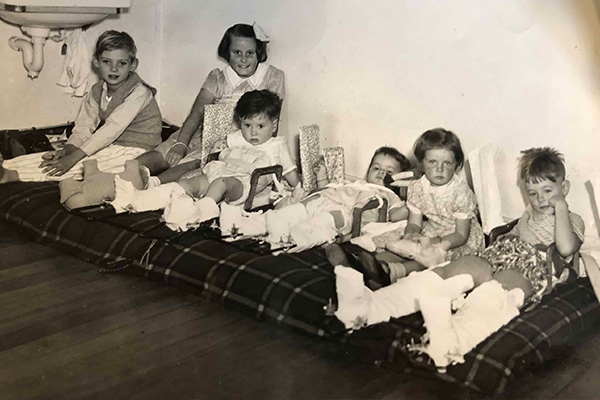
Care for polio stricken children
In the 1950s a devastating worldwide polio epidemic struck Australia, crippling thousands of children.
The Mission’s health clinic attracted significant public interest as it became one of three SA centres to which children were sent from the Adelaide Children’s Hospital for recuperation.
In the early 1950s an agreement was reached whereby the Mission would provide post-polio treatment to all local children.
This reduced demand on the overcrowded hospital, and saw ambulances become a regular sight in Dale Street.
The Mission’s health clinic attracted significant public interest as it became one of three SA centres to which children were sent from the Adelaide Children’s Hospital for recuperation.
In the early 1950s an agreement was reached whereby the Mission would provide post-polio treatment to all local children.
This reduced demand on the overcrowded hospital, and saw ambulances become a regular sight in Dale Street.
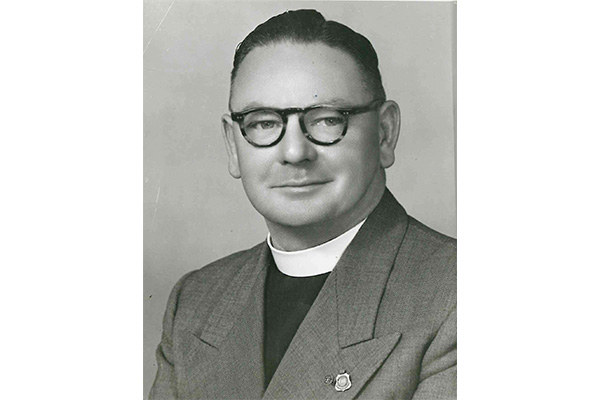
Silwood appointed as church wanes
In the 1950s signs for the Mission were not good. While the Mission’s welfare work continued to grow, its evangelistic impact had clearly waned.
It was in mid-1954 and amid this climate that Reverend Frank Silwood was appointed Superintendent.
It was hoped the WWll veteran with a reputation as a “silver tongued orator” would restore the glory days of the Port Adelaide Methodist pulpit.
However, in 1955 Silwood took the inevitable step and closed the morning church service.
Silwood provided a year of service.
It was in mid-1954 and amid this climate that Reverend Frank Silwood was appointed Superintendent.
It was hoped the WWll veteran with a reputation as a “silver tongued orator” would restore the glory days of the Port Adelaide Methodist pulpit.
However, in 1955 Silwood took the inevitable step and closed the morning church service.
Silwood provided a year of service.
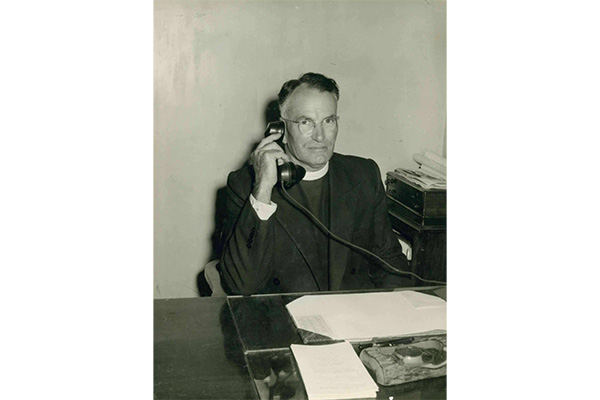
The Harper decade begins
In October 1955, Reverend Stan Harper was appointed Superintendent of the Mission.
Described as a “tough Cornishman”, Harper soon questioned the continuation of the health clinic, which consumed significant funds and was becoming less relevant with expanding government services.
Under Harper’s watch, the Mission added a new wing with 40 rooms to the Wesley House aged care home and expanded its services on Dale Street.
A second-hand clothing store was opened in one of the old Dale Street cottages, with profits supplementing the Mission’s emergency relief work.
Meanwhile, the evening church service was shrinking and the Sunday school met with far fewer children.
Described as a “tough Cornishman”, Harper soon questioned the continuation of the health clinic, which consumed significant funds and was becoming less relevant with expanding government services.
Under Harper’s watch, the Mission added a new wing with 40 rooms to the Wesley House aged care home and expanded its services on Dale Street.
A second-hand clothing store was opened in one of the old Dale Street cottages, with profits supplementing the Mission’s emergency relief work.
Meanwhile, the evening church service was shrinking and the Sunday school met with far fewer children.
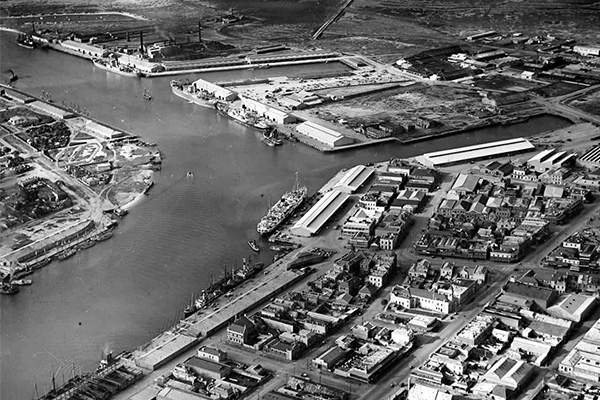
Welfare activities dominate
During the 1960s, unemployment surged as the Port’s shipping industry disappeared and support industries such as General Motors Holden were wound back or relocated.
The presence of migrant and Aboriginal families was also increasing in the district.
At the same time, the Port Adelaide Methodist congregation was tiny, with many other local churches closing.
In this evolving social context, the Mission shed its original vision for a specialised church congregation intent on growing through evangelism.
Welfare activities for people of the Port, and increasingly Adelaide’s northwest, now dominated the Mission’s activities.
The presence of migrant and Aboriginal families was also increasing in the district.
At the same time, the Port Adelaide Methodist congregation was tiny, with many other local churches closing.
In this evolving social context, the Mission shed its original vision for a specialised church congregation intent on growing through evangelism.
Welfare activities for people of the Port, and increasingly Adelaide’s northwest, now dominated the Mission’s activities.
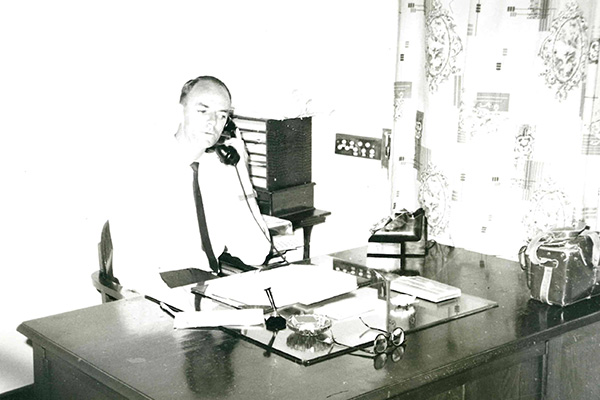
Martin’s appointment brings new life
Reverend George Martin was appointed Superintendent in January 1967 – a time when the Mission was seen as rundown and out of date.
Many thought the Mission had fulfilled its purpose and should close. But Martin, aged 35, saw a community with many needs and an organisation that required significant reform to address these.
Martin carefully considered challenges facing the area and reassessed the Mission’s services. He introduced modern approaches to addressing social issues and developed positive relationships with government leaders.
Under Martin, the Mission grew dramatically with new services for the elderly, non-English speaking people, low-income families, parents and children, the unemployed, those living with mental illness and homeless youth.
By Martin’s retirement in 1996, the Mission had become one of Australia’s most comprehensive community welfare services.
Many thought the Mission had fulfilled its purpose and should close. But Martin, aged 35, saw a community with many needs and an organisation that required significant reform to address these.
Martin carefully considered challenges facing the area and reassessed the Mission’s services. He introduced modern approaches to addressing social issues and developed positive relationships with government leaders.
Under Martin, the Mission grew dramatically with new services for the elderly, non-English speaking people, low-income families, parents and children, the unemployed, those living with mental illness and homeless youth.
By Martin’s retirement in 1996, the Mission had become one of Australia’s most comprehensive community welfare services.
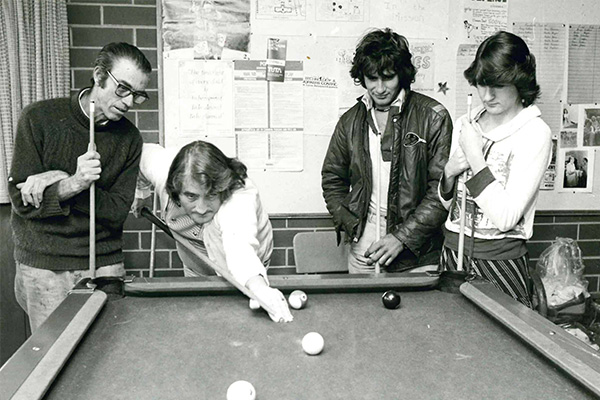
New social welfare scene sparks shift
In the late 1960s and early 1970s the political and policy landscape in which the Mission operated was being challenged.
Don Dunstan was elected Premier in June 1967, bringing with him a focus on structural issues that produced disadvantage, rather than ‘band-aid’ solutions.
The search for constructive solutions meant the Mission could no longer rest on short-term remedies such as a night’s shelter.
The Mission became a major user of increased government funding in the 1970s and a pacesetter in delivering tailored community welfare services.
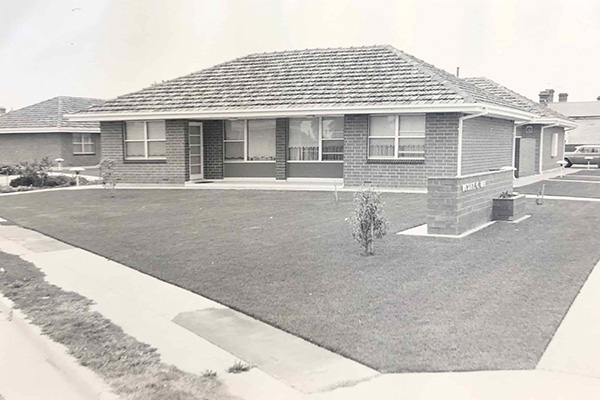
Units offer independent living to the aged
In 1968 the Mission opened its first independent living units for older people at Rosewater. Named Wesley Court, the property consisted of a group of eight cottage units.
Two years later a group of 16 units were built at Semaphore Park and named Willason Grove in memory of Superintendent Willason.
These developments represented the Mission’s expanded view of need, which included older people who wanted the security and comfort of communal accommodation.
The proportion of disadvantage among the Mission’s residents remained relatively high compared to other SA services.
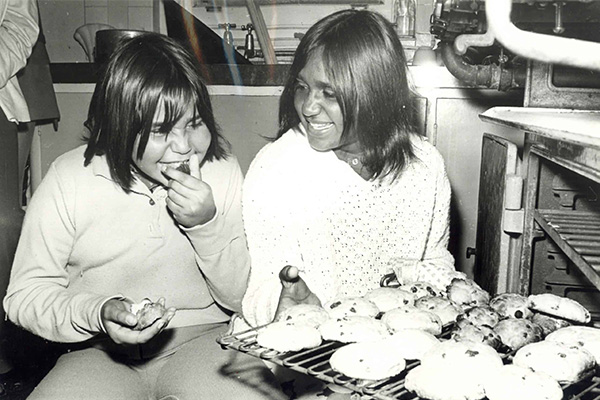
Sunday Club supports Aboriginal youth
Endeavouring to support Aboriginal children, the Mission started a Sunday Club program in 1969 which quickly grew to over 100 attendees.
Instigated by Peter Bicknell – who was to become an important Mission figure, the program was among the first of its type in Australia and included camps, sports, music, craft and leadership activities.
The Sunday Club was deemed risky by the Mission. However Reverend Martin convinced the Board that what may have been seen as signs of failure –15 broken windows in three weeks – were in fact a sign that the Mission was where it needed to be, working with the most challenging young people.
From the Sunday Club other programs were formed for Aboriginal youth and adults, including the Friendship Club for parents, a Health Club and seven homework and learning centres.
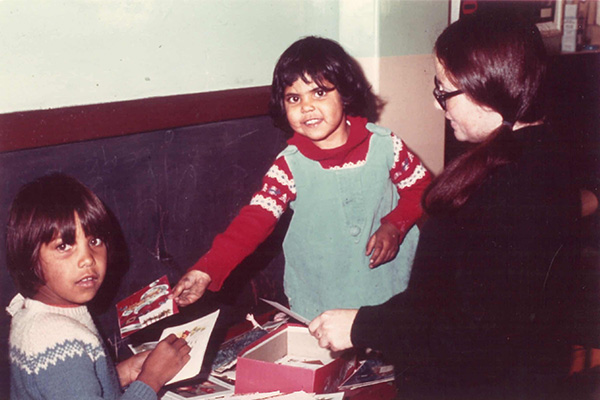
Aboriginal community takes the reins
Significant government funds were made available for Aboriginal education programs in the 1970s.
Supporting the principles of self-determination, in 1975 the Mission used this funding to transfer its Aboriginal community development projects to the ‘Port Adelaide Aboriginal Coordinating Committee’, which consisted of members of the Mission’s Aboriginal programs.
The projects continued to be based at the Mission but were progressively transferred to Aboriginal leadership.
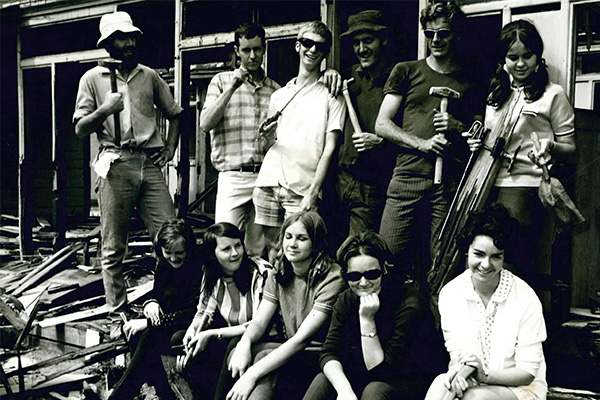
Hostel carriages demolished
In February 1970 the Port Council issued a notice to the Mission, calling for the removal of the two run-down railway carriages that served as a men’s hostel.
Despite men having lived in the carriages for up to 17 years, the old carriages did not meet contemporary health regulations and were soon demolished.
While the carriages had served a useful purpose during the depression, by the more prosperous 1970s community standards had moved on.
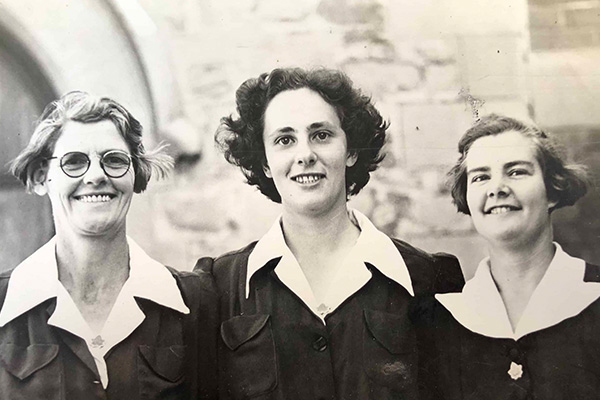
Health clinic era concludes
Chiropody, the last of the Mission’s para-medical clinic services, concluded in 1971, marking the end of the health clinic era.
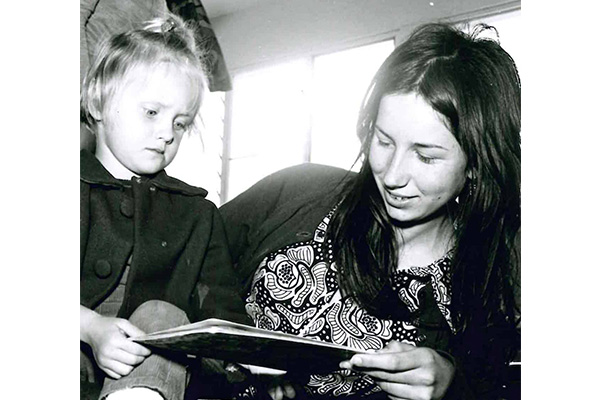
Services for newly arrived migrants
In 1972 the Mission formalised its first services for people from diverse cultural backgrounds – an area that would become a significant focus.
A social worker and specialist bilingual staff were employed to support an increasing number of ethnic groups migrating to the Port.
Later called Migrant Welfare Services, the team provided counselling, tutoring, information and referral services to help newly arrived migrants navigate finance, employment, housing, welfare, health and legal matters.
By 1979, the program supported 180 families, mainly from Greek, Polish and Ukrainian backgrounds.
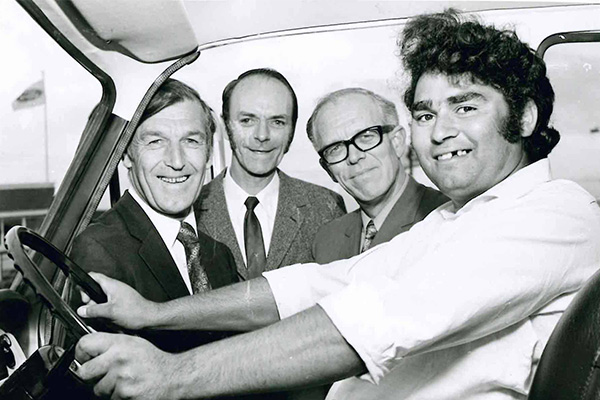
Employment services commence
The Mission’s employment programs began in earnest in the mid 1970s amid rising unemployment and living costs.
The Mission hired three unemployed men in 1973, and by mid-1975 additional workers were deployed to do maintenance work at Wesley House.
While only 1.6 per cent of the workforce were listed as unemployed in 1970/71, by the middle of the decade that rose to 6 per cent.
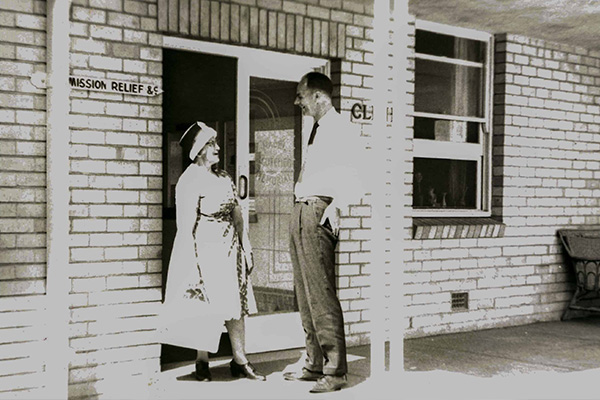
Martin leads Poverty Inquiry
In 1973 Superintendent Reverend Martin was approached to be a Commissioner in the Commonwealth Government’s Poverty Inquiry, specifically investigating the medical-social aspects of poverty.
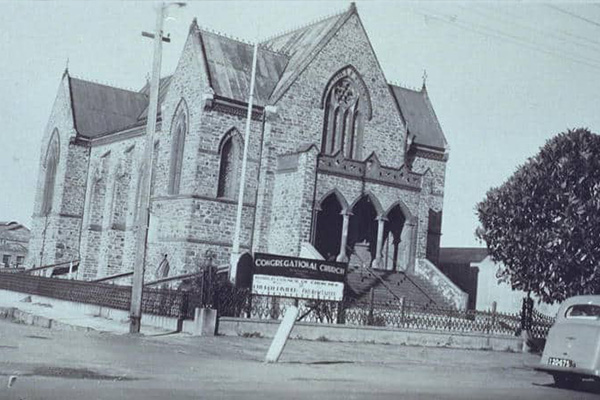
Churches at the Port unite
In the late 1960s the Mission entered into cooperative arrangements with the Congregational Church on Commercial Road, Port Adelaide.
The population of the Port was down to about 1000 people and attendances at both the Methodist and Congregational churches were declining.
Becoming a ‘united church’ was seen as a sensible arrangement that would enable worshipping to continue at the Port.
The inaugural combined service of worship took place at the Congregational Church in March 1973.
The union created possibility for the Dale Street church site to be redeveloped.
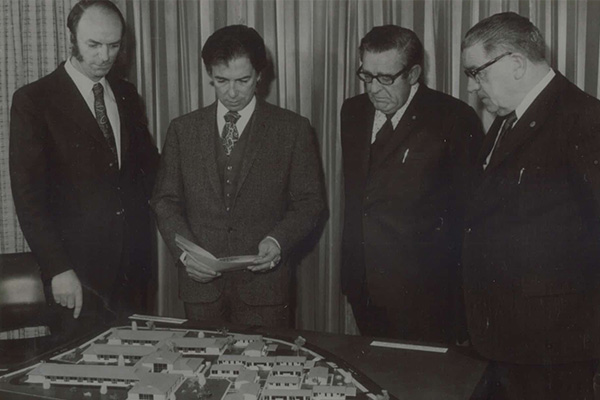
Westminster offers continuum of care
Construction of the Mission’s second aged care site, Westminster Village, commenced in 1974 at Grange.
Completed in 1981, the project saw a move away from the traditional hospital-like nursing homes towards a more homely atmosphere.
Nurses dressed in colourful uniforms, rooms were carpeted, relatives were welcome at any time and visiting pets were encouraged.
Once complete, Westminster Village offered various levels of accommodation, including independent living units, a hostel and a nursing home.
Westminster was one of the first examples of the Mission’s philosophy to provide a continuum of care for older people.
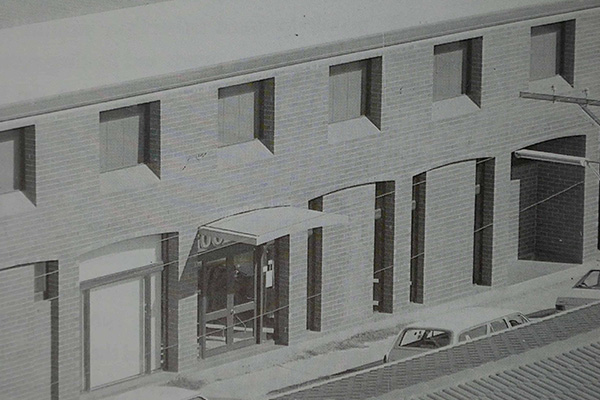
A new chapter begins on Dale Street
By August 1973 development plans for the Mission’s new headquarters on Dale Street had been approved.
In November the church, which was in a bad state of repair, was demolished to make way for a more suitable building for the Mission’s welfare work.
The new two-storey headquarters was occupied in March 1976 and included a hall, chapel, lecture space, counselling rooms, a Goodwill store, offices and reception area.
The memorial tablets, foundation stone and stain glass windows from the church were kept for display in the new building.
Polkinghorne brings gender balance
In 1976 Reverend Margaret Polkinghorne became the first woman appointed to the Mission’s Board.
Polkinghorne continued as a Board Member for six years until 1982.
By the late 1990s the majority of Board members were women.
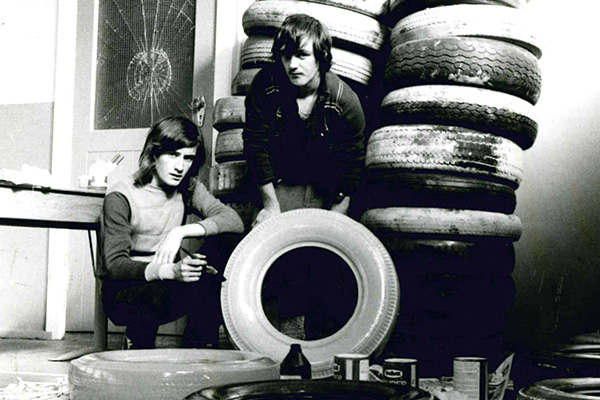
Support for a ‘jobless generation’
In February 1977 the Mission launched the Port Unemployment Project (PUP) to help young people improve their chances of getting work.
Funded through the government's new Community Youth Support Scheme, PUP responded to heightened levels of youth unemployment in the Port area – double the state average.
PUP initially focused on preparing for job interviews and voluntary work experience, but grew to include training in areas such as forklift driving, woodwork and office skills.
By mid-1977 the Mission had deployed almost 50 young people to voluntary service roles.
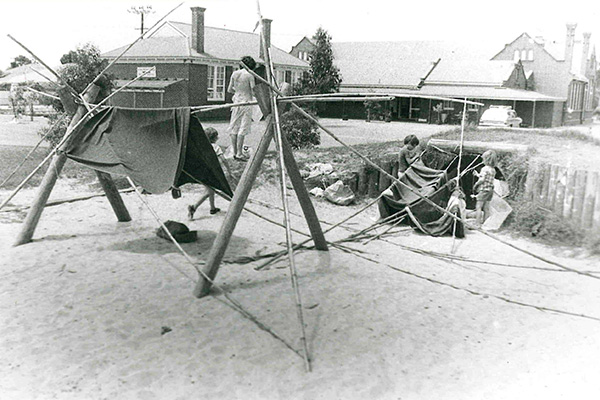
Port Family Project launches
In 1977 the Mission set about developing a project to enhance the relationships, wellbeing and community engagement of severely disadvantaged families.
Operating from 70 Dale Street, the Port Family Project offered a range of activities, including guest speakers, counselling, children’s outings and a bulk buying grocery scheme.
At the same time an employment pool was established with the help of the local Rotary Club, signalling the Mission’s desire to support the community in ways other than material aid.
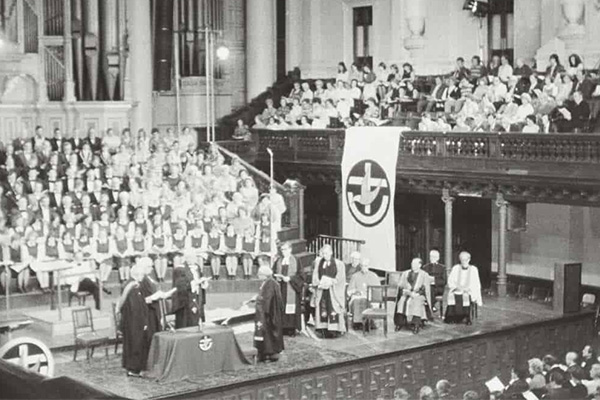
Uniting Church of Australia established
June 1977 saw the establishment of the Uniting Church, bringing together most congregations of the Presbyterians, Congregationalists and Methodists.
This marked the end of more than a century of Methodist worship at the Port.
With the inauguration of the Uniting Church, the word “Methodist” was removed from the Mission’s name.
Employment project supports Aboriginal youth
The Mission established an Aboriginal Unemployment Committee in 1978 to address the difficulties of unemployed Aboriginal youth, an increasingly obvious social problem in the Port.
Funded through the government’s Community Youth Support Scheme, the committee was comprised of members of the local Aboriginal community and the Department for Community Welfare.
Through the committee, a project was launched in February which focused on job finding skills, personal development, and work experience opportunities.
Independent living units at West Lakes
McCutcheon Grove at West Lakes Shore was the Mission’s first group of independent living units to be developed under the ‘equity housing’ arrangement (without Commonwealth funding).
Fourteen units were built as part of the first stage in 1978, with another 15 units added in 1982.
The site was named after Superintendent McCutcheon.
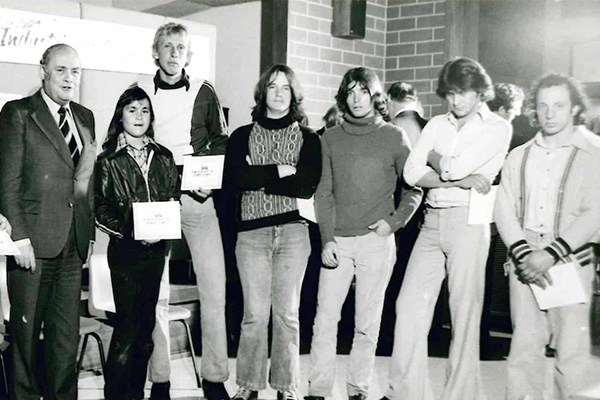
Youth training centre opens
Faced with high levels of youth unemployment in the Port, the Mission launched the Portside Industries and Training Centre in 1979.
Situated in the old Mayfields Factory on Dale Street, the centre offered industrial training courses in areas such as forklift driving and arc welding.
In its first year of operation, at least 200 youths completed training at the centre – an initiative of the Port Unemployment Project.
Other youth training initiatives delivered by the Mission included the Riverland Job Orientation Project which saw young people learn about fruit picking, rotary hoeing and tractor driving in a camp setting.
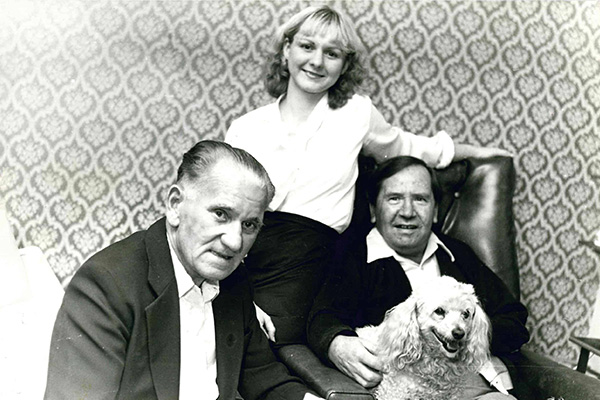
Port Care strengthens community ties
The Port Care initiative was introduced in July 1979 as a home visitation and friendship development scheme for isolated older people.
The initiative saw trained volunteers visit older people in the Port to simply have a chat, get them out and about and help with tasks around the home.
The venture strengthened older people’s engagement in the community, with genuine friendships established.
By mid-1980, there were 30 volunteers servicing 67 homes in the area.
Advocacy work provides a voice for the people
The Mission conducted an Aboriginal housing survey in the 1980s to drive policy changes that would ensure appropriate and increased housing for Aboriginal people in the north-west region.
This is one example of the Mission’s early advocacy work.
Advocacy remained a significant focus for the Mission, and included areas such as social security provisions, mental health reform, housing availability and aged care funding.
Home care services expand
Following major policy and funding changes, the Mission’s support for home care services strengthened in the mid-1980s, with an endeavour to support older people from non-English speaking backgrounds.
Home care assistance was also offered to residents within the Mission’s independent living units.
Originally known as the ‘Respite Care’ program, the Mission’s home care services responded to an increasing desire among ageing people to remain in their home.
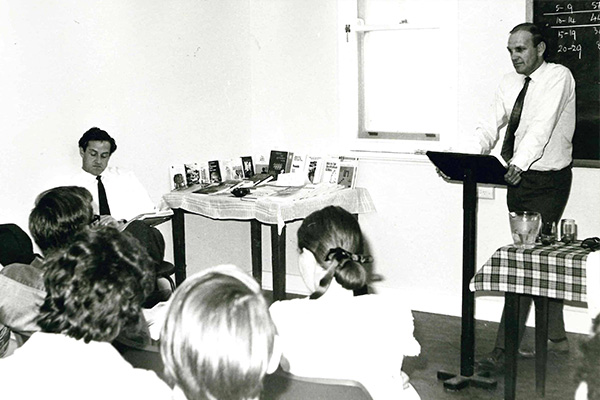
Port Adelaide youth centre opens
In October 1981 the Port Adelaide Youth Service was launched by the Mission, delivering 172 occasions of service in its first two months.
Led by an Outreach Youth Worker, the service assisted youths with unemployment issues, health and financial problems, as well as accommodation and legal matters.
The service operated above the ‘Somewhere Else’ amusement centre on St Vincent Street and served as a drop-in centre.
A Youth Outreach Worker was also employed, frequenting youth hang outs, such as arcade malls, to identify and help at-risk youth.
Volunteer counsellors were also deployed.
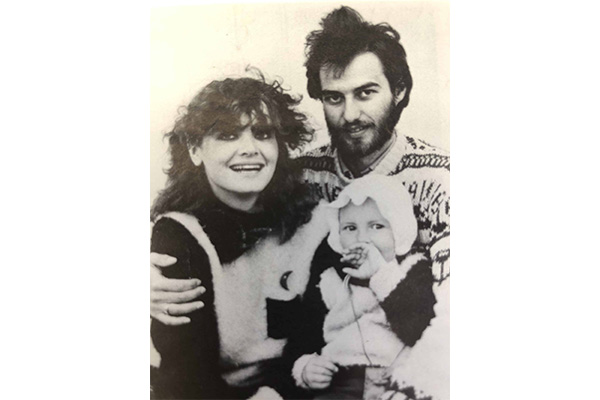
Hosting program supports refugees
In March 1982 migrant work at the Mission continued to grow with a government funded migrant hosting scheme set up to offer ‘practical friendship’ to Eastern European refugees.
The Eastern European Refugee Hosting Scheme aimed to help refugees from Poland, Rumania, Czechoslovakia, Bulgaria and Hungary settle into the community.
Within its first six months the program had mobilised 66 host families, hosting 160 migrant families and 12 single people
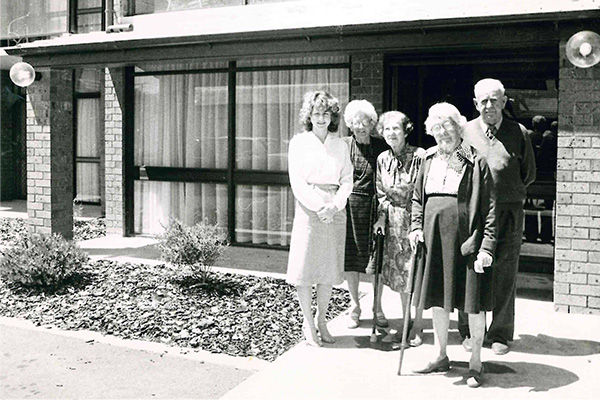
Wesley House upgraded
A major redevelopment of Wesley House commenced in 1983.
The $1.4 million upgrade saw the demolition of the McCutcheon Wing to make way for a new two storey building, equipped with a lift and 55 rooms.
Two other wings were renovated, with new recreation rooms, a lounge room and hair salon also added.
At completion, Wesley House provided hostel accommodation for 84 people and 44 nursing home places.
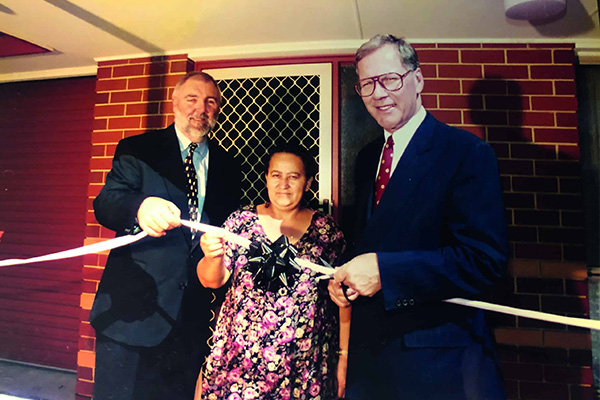
Portway Housing established
In August 1984 the Portway Housing Association was created to address overcrowding and rising rental prices – a common experience of those seeking the Mission’s assistance.
Portway was sponsored by the Mission in conjunction with the SA Housing Trust.
By 1986 Portway Housing was managing seven houses and six units located in the Port Adelaide and Woodville areas.
Portway continued to expand its housing stock over the coming years, managing 80 properties by the late 1990s.
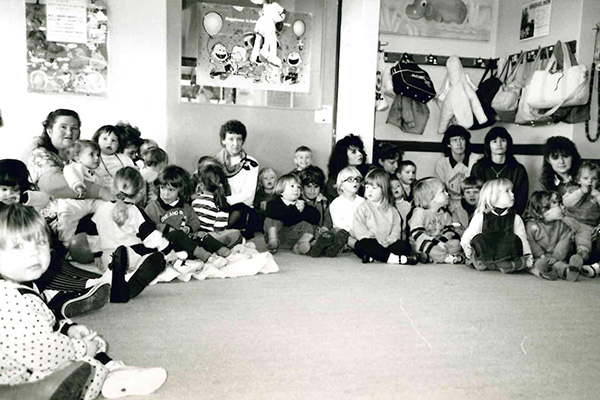
Port Child Care Centre opens
Amid a strong social desire to prioritise child development and increase workforce participation, the Mission began exploring the option of running a child care centre in the 1970s.
In May 1985, a Child Care Centre offering 60 places finally opened at 58 Dale Street, with Deborah Chernoff appointed director.
Funded by the Department of Social Security, the centre supported 95 families and 115 children in its first three months.
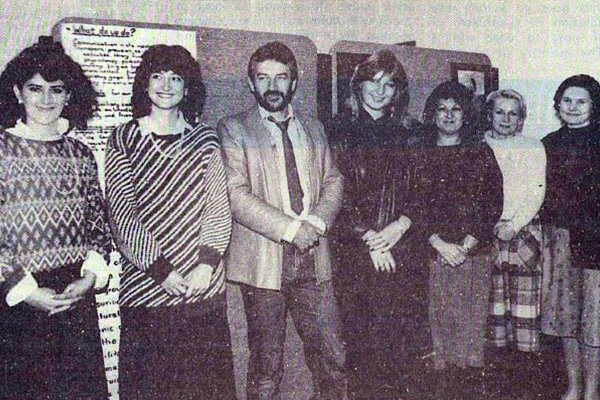
Ageing support for Eastern Europeans
Building on assistance provided to newly arrived migrants, in 1984 the Mission began investigating the needs of older ethnic people in the western suburbs.
Many were estranged from family through war and found mainstream services non-inclusive.
Working with the Department of Community Services and an ethnic advisory committee, in April 1985 the Mission opened an Ethnic Aged Care Centre on Woodville Road.
Its goal was to improve the quality of life for older people of Eastern European origin through improved access to mainstream services.
Five bilingual and bicultural caregivers were employed, with 3,062 visits made to 2,104 people in 1986 alone.
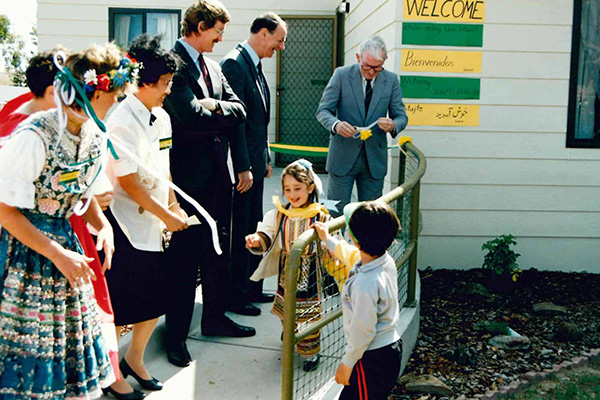
Pennington child care centre opens
In March 1986 the Mission launched a child care service at the Pennington Migrant Centre.
Offering 42 places, the centre was staffed by bilingual child care workers and attracted recently arrived migrant families from El Salvador, Czechoslovakia, Romania, Vietnam, China, Bulgaria and Cambodia.
Although the centre had a short life, it served an important role in the early 1990s with an increased migrant intake who could not afford child care.
In 1991 the child care service moved to a larger building, where it continued to offer free child care to English class students at the Migrant Centre.
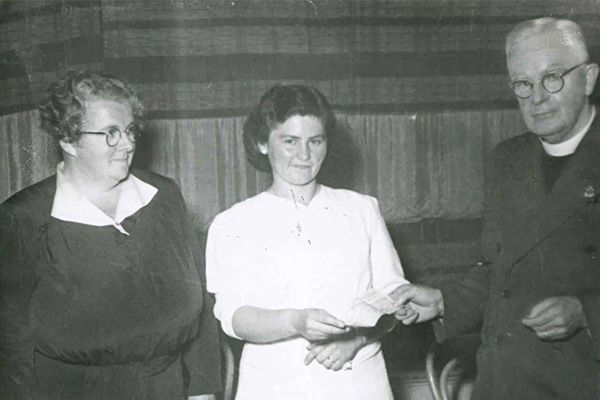
Aged care accommodation diversifies
The Mission developed a new model for aged care accommodation in 1986, with construction of the Faggotter Grove neighbourhood group home near West Lakes.
Opening in April 1987, the group home provided private accommodation for 10 residents, with shared living, dining and outdoor spaces to promote social interaction.
Faggotter Grove fulfilled the needs of older people who weren’t eligible for hostel accommodation subsidies, but sought a degree of privacy, companionship and independence.
The facility was named in honour of Maude Faggotter and daughter Joan, who were significant Mission supporters.
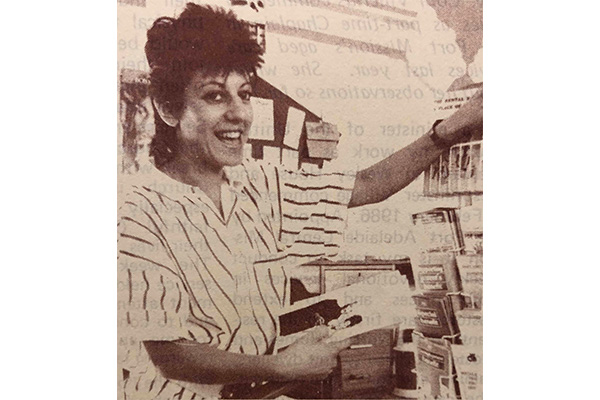
Youth Street Information Centre launches
The Mission’s Youth Street Information Centre was officially opened by Special Minister of State, the Hon. Mick Young on 11 February 1987.
The centre aimed to provide a welcoming space for the exchange of information about recreation, accommodation and employment opportunities.
The centre was located in the hall behind the Uniting Church on Commercial Road.
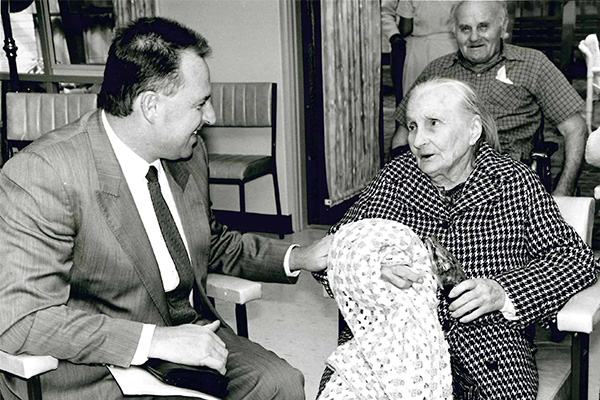
Home delivers cultural aged care
Amid an increasing ageing multicultural population, the Mission was approached by several ethnic communities seeking support to establish ethnic specific aged care facilities.
Reverend Martin advocated on their behalf for the purchase of two aged care facilities that would deliver culturally appropriate care.
The first of these sites, Seaton Aged Care, was purchased in mid-1987 and prioritised residents from Croatian and Ukrainian backgrounds.
An advisory committee including volunteers from both backgrounds was set up to foster a culturally sensitive environment, and Croatian and Ukrainian cooks were employed.
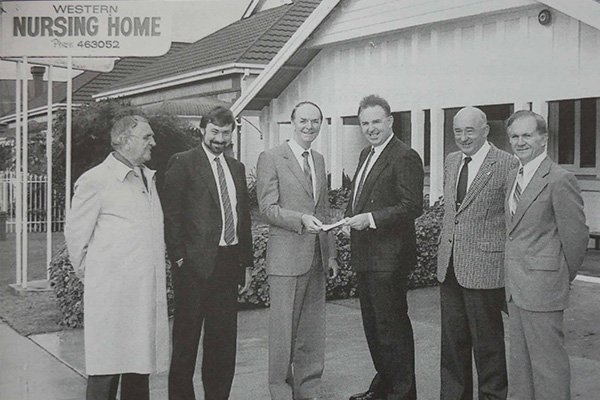
Polish aged care home opens
The Mission’s second cultural aged care facility was purchased in 1988 in partnership with the Polish Federation.
The Western Nursing Home, later St Teresa Aged Care, gave priority to people of Polish origin.
Located in Croydon West, the home supported 46 residents and was presided over by an advisory committee with strong Polish representation.
Staff at both the Seaton and Western Nursing Homes were encouraged to grasp the languages and customs of residents.
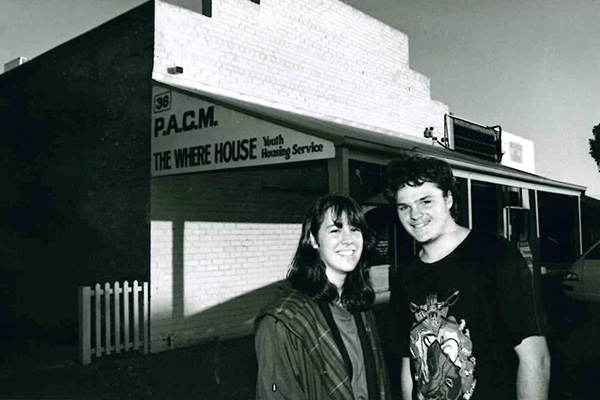
Youth accommodation service expands
A dramatic expansion of the Mission’s youth accommodation program came in 1989 with its successful tender for the Western Suburbs Youth Accommodation Service.
This saw the Mission’s existing 12 properties double in number.
Houses were set up specifically to suit certain groups such as young mothers, people from non-English speaking backgrounds and Aboriginal youths.
n the Spring of 1989 the Mission’s Youth Accommodation Service also relocated to a converted warehouse at 36 Dale Street, Port Adelaide, known as the ‘Where House’.
Headed up by a new Youth Housing Outreach Worker, the ‘Where House’ offered an expanded range of support including referral, advocacy and skill development services.
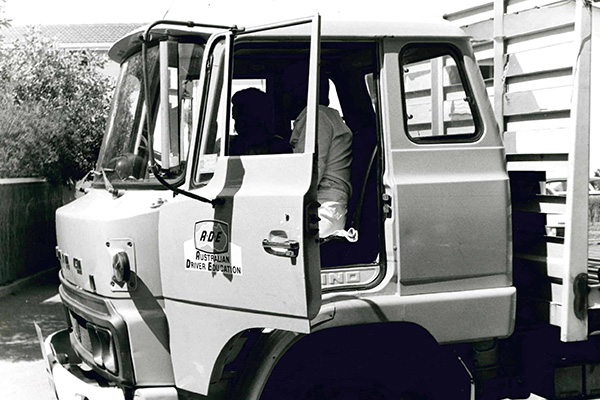
Employment focus expands
In 1989, the government’s Community Youth Support Scheme was replaced by Skill Share, which had no age restrictions.
Skill Share focused on long term unemployed and other disadvantaged out-of-work people such as those with disabilities, Aboriginal people, sole parents and migrants.
Consequently, the Port Unemployment Project became the Port Employment Project (PEP) which offered expanded job-ready training and personal development activities to people of all ages.
Truck and car driving, computer awareness, job searching, office skills, aged care, reception and typist courses were among those offered.
In 1989 alone over 1,500 job seekers were assisted.
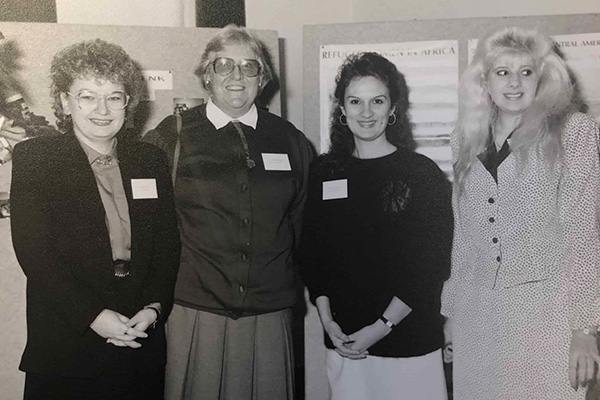
Ethnic aged support expands across SA
In 1989 the Mission launched its Ethnic Link program – a state-wide linkage and advocacy service for frail elderly and younger disabled people from non-English speaking backgrounds.
Beginning as a pilot project, Ethnic Link aimed to provide more equitable access to community services and help people remain living independently.
Launched by the Minister for Aged, Health and Community Services on 29 June, Ethnic Link initially targeted ethnic people living in western Adelaide, the Riverland and Whyalla.
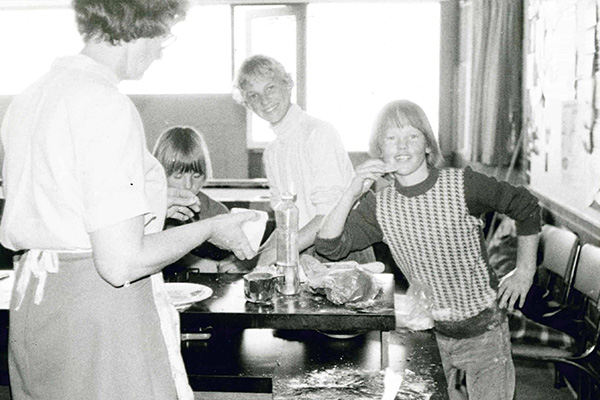
Outreach supports Taperoo families
In 1990 a Community Outreach Program based at Taperoo Primary School was developed as part of the Mission’s Port Family Project.
Launched in March, the outreach ‘family centre’ provided support to low income families in Taperoo, offering a playgroup, op shop, adult literacy program, referral services and social groups.
Links with Junction Community Centre were also being formed, with plans for this to become the project’s second outreach post.
The central base for the project remained at 70 Dale Street, which was home to its parent drop in centre.
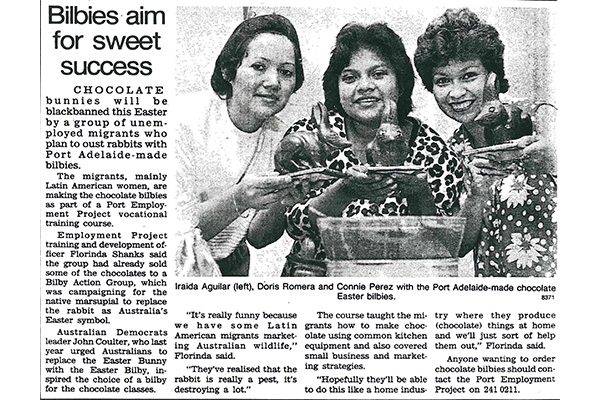
Creative pathways to employment
In 1991 the Mission received grant funding to run ‘enterprise-focussed’ employment initiatives.
A number of enterprise initiatives were introduced including packaging dried flower products, horticultural training for Aboriginal people and olive oil production for newly arrived migrants.
One of the Mission’s more interesting projects was the production of chocolate Easter bilbies, with proceeds donated to the ‘Save the Bilby Fund’.
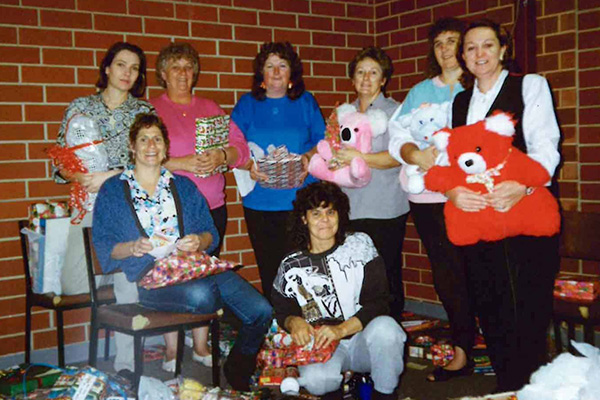
Christmas Appeal launched
The Mission – and the Uniting Church nationally – partnered with Target for the inaugural Christmas Appeal in 1992.
To this day, the appeal involves a gift collection and fundraising within stores, with clients receiving food, vouchers and gifts for themselves and their children.
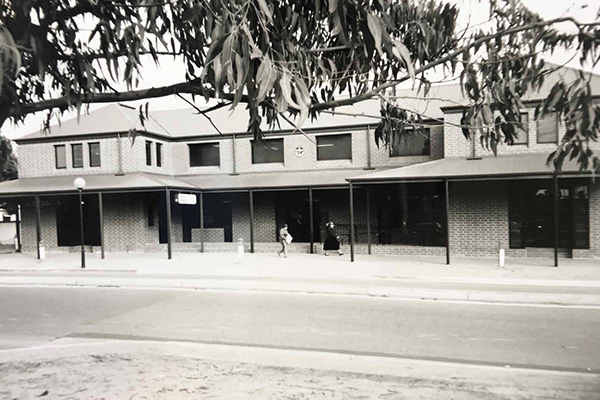
Dale Street headquarters expand
During Martin’s 30 years as Superintendent, the Port Adelaide Central Mission underwent significant growth, from 45 staff in the late 1960s to nearly 500 in the late 1990s.
In the 1992 the Mission completed an expansion of its 70 Dale Street headquarters to cater for the growing organisation.
New east and west wings were added to the building, while the central area was refurbished.
The premises doubled in size and incorporated disability access.
To help fund the development, the Mission negotiated a 10-year lease of the bottom floor to the Federal Government’s Commonwealth Employment Service.
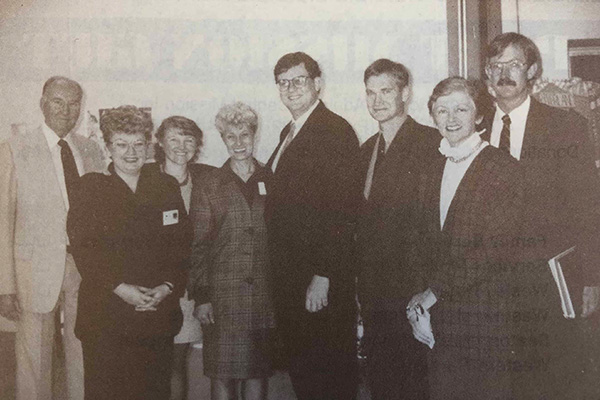
Ethnic Link Services commences
In 1992, the Mission’s Ethnic Link and Ethic Aged Centre programs were amalgamated into a state-wide program, called Ethnic Link Services.
This expanded service built on the Mission’s good reputation with ethnic communities and care-providing agencies.
It focused on providing access to, influencing and advocating for culturally appropriate services for older people and their carers.
Based in Port Adelaide, briefly in the old Customs House, and then in a premise on Commercial Road, Ethnic Link Service was delivering services in 32 languages by 1997.
New youth housing
In 1993 the Mission was successful in gaining funding approval for the operation of the western component of the restructured Supported Youth Accommodation Assistance Program.
Consequently, the Mission’s Youth Housing Service expanded to include 11 workers and a staffed 24-hour intensive accommodation facility for young homeless people.
A number of additional smaller houses scattered in nearby suburbs also provided medium and long-term youth accommodation.
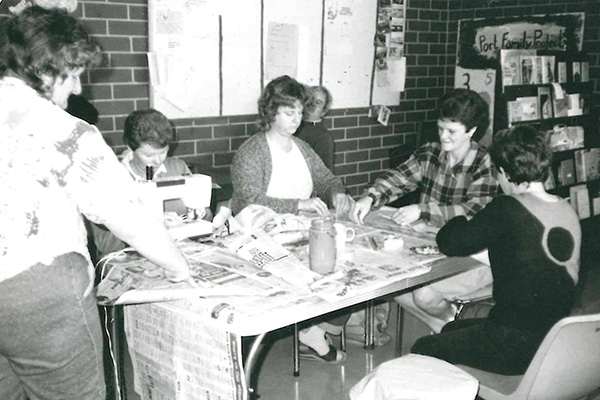
Family Project integrates with emergency relief
In 1993 steps were taken to integrate the Port Family Project with the Mission’s emergency relief work to better address the underlying factors contributing to family distress.
The Family Project outreach centre moved from Taperoo School to Dale Street, where it co-located with the emergency relief program.
Referrals for the project were generated by emergency aid applications.
In this same year the Mission responded to the government’s request to conduct a pilot project supporting families, called ‘Strengthening Families’.
Strengthening Families aimed to help parents and carers build positive family relationships through individual, group and outreach support.
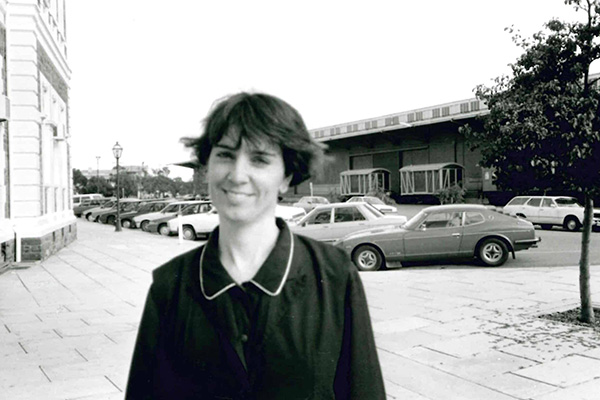
Youth work
The Mission’s dedicated Youth Workers continued to provide young people with information, advocacy and support to overcome the challenges they faced.
Come of the Mission’s endeavours included a Young Mothers Group, Mental Health Group, Young Women’s Issues Forum, Ritual Abuse Survivors Support Group, Youth Housing Network, and a recreation programme.
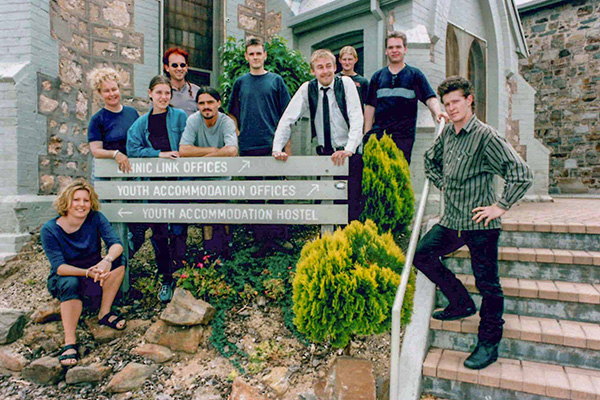
George Martin Centre opens at Alberton
In March 1994 the Mission announced its plans to transform the Alberton Uniting Church site into a youth residence and outreach centre, named in honour of Superintendent Martin.
The dwindling church congregation had invited the Mission to purchase the facility, believing it would better address the community’s contemporary needs under the Mission’s ownership.
The centre, became the base for Ethnic Link Services and the Port Youth Accommodation Program (PYAP).
PYAP included a new 24-hour facility with eight beds and a live-in supervisor as well as an outreach service supporting around 50 young people in 23 homes in the north-west.
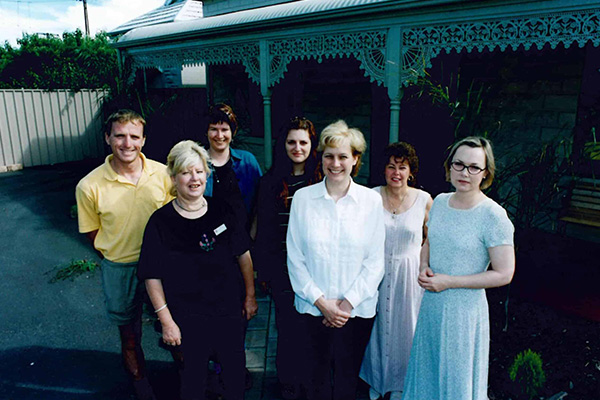
Disability employment services
In March 1995 the Mission took over the ‘Business Partnerships’ employment program delivered by Hillcrest Hospital for people with mental-health related disabilities.
Renamed ‘Port Business Partnerships’, the service provided supported work opportunities in areas such as industrial sewing, gardening and cleaning.
The Mission then successfully tendered for the ‘Port Supported Employment Program’ which assisted people with mental health related disabilities to access training courses and open employment.
Port Business Partnerships was originally delivered from 158 St Vincent Street, while the Port Supported Employment Service was based at 70 Dale Street.
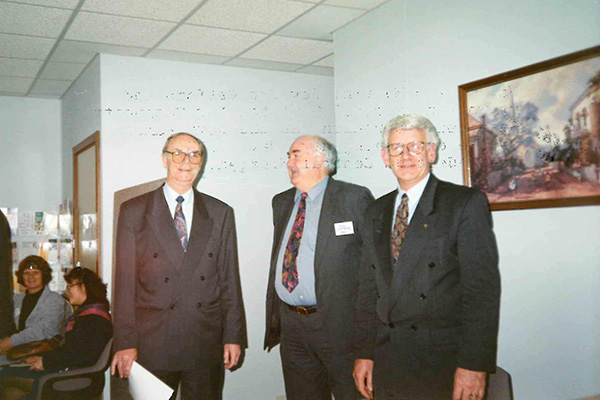
New Port Mission Family Centre unites services
A shift in funding policy saw the government contract out increased welfare services to community organisations, including the Mission.
In light of this new funding and service focus, the Mission established a Port Mission Family Centre at 36 Dale Street.
Launched by the Minister for Family and Community Services on 17 May 1995, the centre co-located the Port Family Project, Strengthening Families program, Migrant Services and Emergency Assistance.
Through this significant amalgamation, the Mission could deliver effective services across a range of community areas.
Mental health housing support
During the 1990s the Mission endeavoured to provide mental health services in a policy context that was pushing for deinstitutionalisation of people living with a mental illness.
It soon became the Mission’s second largest field of service behind aged care.
In March 1996 the Mission launched its ‘Supported Housing Access Program’, assisting people with mental health related disabilities in the western suburbs to live independently in the community.
Delivered in partnership with Western Mental Health Services, the program brought together housing and community support services, enabling people who would otherwise remain in hospital to live in a home of their own.
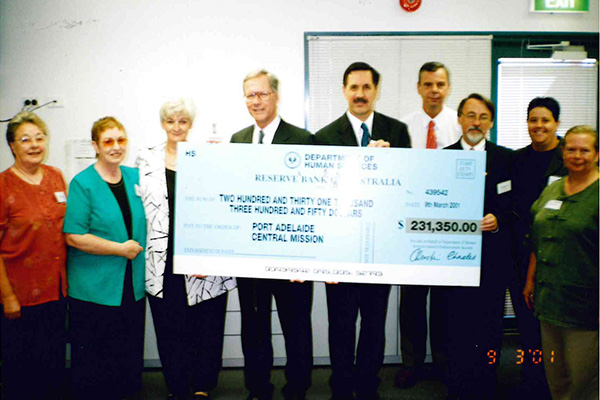
Housing support expands with Metro Access
In September 1996 the Mission won a contract to provide a metropolitan wide housing and support program in partnership with SA Mental Health Services.
The program, later known as Metro Access, initially supported 52 people living in government housing. However the Mission quickly set about finding alternate private accommodation, believing it would increase tenants’ self-sufficiency and quality of life.
After the program’s first four months, there were 102 people living in 98 rented houses across western Adelaide.
In 2001 Metro Access developed a more intensive seven day a week program in Adelaide’s North, called Metro Community Living North.
This program later expanded to the southern Adelaide, Whyalla and Mount Gambier and provided flexible levels of support to help people to live independently in the community.
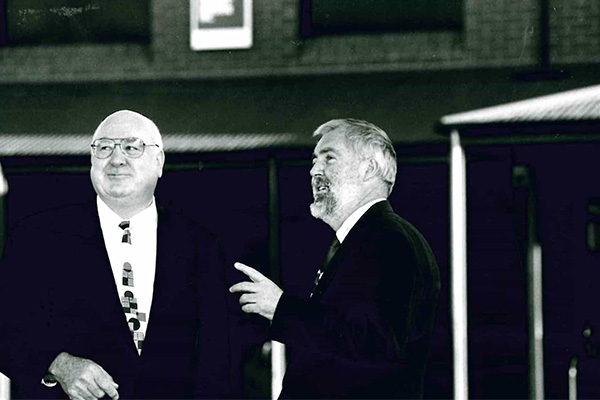
End of George Martin era
The retirement of Superintendent Reverend George Martin in 1996 marked the end of an incredible era for the Mission and a change in leadership structure.
Reverend Don Catford was appointed as Superintendent, while Peter Bicknell took on the newly created role of General Manager.
Catford and Bicknell developed plans for the Mission over the next five years with a focus on a ‘united sense of purpose and quality services’.
In a fundamental change in leadership style, the new team engaged all staff in refreshing the organisation and developing a new improvement plan.
The resultant ‘Enhancing the Mission’s Work’, endorsed by the board, guided staff in their internal processes and outward looking objectives.
Mental health focus expands
In 1996 the Mission successfully tendered for the ‘Neighbourhood Access’ program which helped people with a mental disability engage in recreational activities.
These were activities directed by the client, not the support worker and enabled clients to engage in activities of their choice and become more connected with the community.
In 1996 the Mission also launched its Chat ’n’ Chew initiative, providing free nutritious two-course meals on a fortnightly basis to people on low income in the western region.
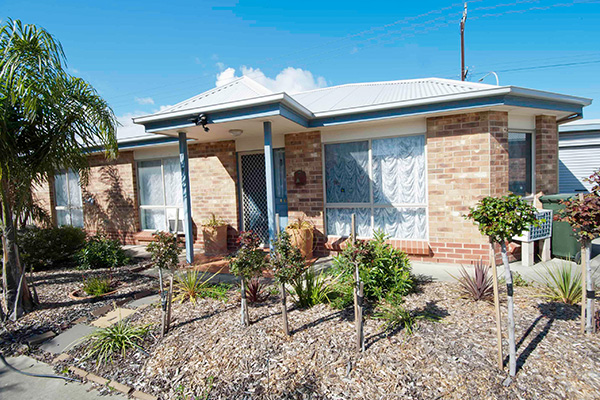
Major growth for community housing arm
Portway Housing was accepted as one of three Housing Associations to move to 150 houses over the next three years.
Five houses were built at North Haven, two at LeFevre Peninsula, 10 in Croydon and a further 10 at Rosewater.
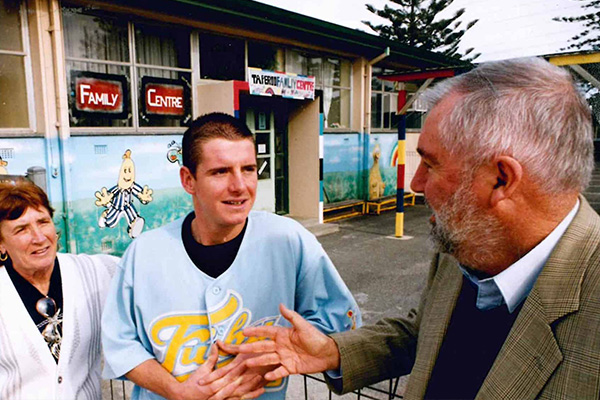
Community outreach expands at Taperoo
The ‘Community Outreach Project’ based at Taperoo Family Centre opened in 1997, offering opportunities for training, skills development and networking.
It was run with grants from the government’s Adult Community Education Unit and was staffed by volunteers.
The Community Outreach Project’s Young Mother’s group won an Australian Violence Prevention Award for its excellent work.
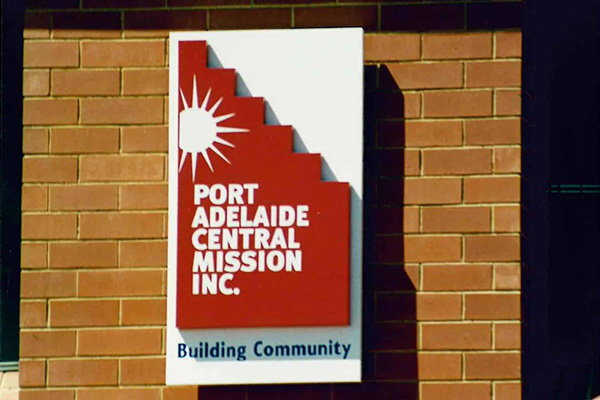
Port Mission building community
Consistent with local usage, the Port Adelaide Central Mission formally registered ‘Port Mission’ as a shortened name.
A new logo and positioning statement for the Mission was launched, highlighting the slogan ‘building community’.
The red brick indicates the ‘building’ aspect while the light points to the Mission’s Christian heritage.
Don Catford: ‘The logo is an acknowledgement that we live in times of great change and that the Mission is continually changing and adapting to meet, and conquer, new challenges’.
Quote Peter Bicknell: ‘Many people in today’s society lack community – a strong sense of belonging. Individuals often feel vulnerable lonely and unable to join in. PACM is dedicated to building community, ensuring that each person is significant, connected to others and able to contribute’.
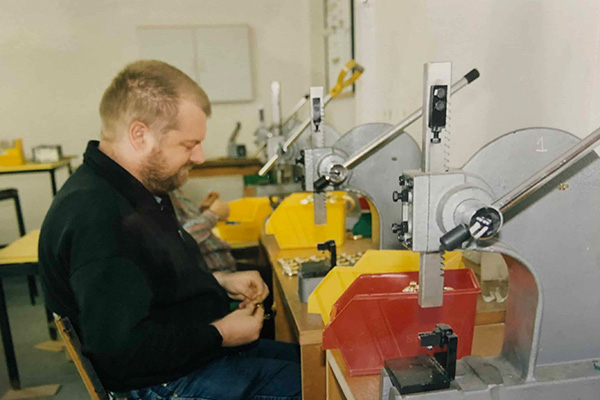
Employment services go beyond the Port
In 1998 the Mission expanded its employment services beyond Port Adelaide with the ‘Special Training and Employment Program’ (STEP) centre in Stepney and ‘Northpoint’ in Salisbury.
Sometimes referred to as Salisbury Skillshare, Northpoint delivered recruitment and a Jobs Pathway contract to assist school leavers into work.
ABI and mental health program commences
In partnership with Disability SA and SA Mental Health, in 1998 the Mission developed a service for people who had challenging needs as a result of acquired brain injury (ABI) and mental illness.
People were supported to maintain their independence and avoid institutional type care.
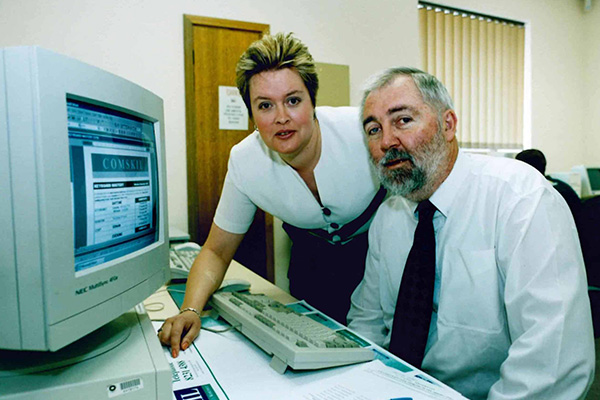
Mission amalgamates with Comskil
Following significant changes to the Commonwealth government’s funding of employment services, the Mission amalgamated with Comskil to provide employment, training and call centre services.
Comskil, a well know South Australian employment and training service, operated the South Australian Housing Trust Call Centre, which handled 6,500 phone calls on average per week.
Staffed by 40 Mission employees, the call centre operated 24/7 and was the highest rated in customer service across Australia.
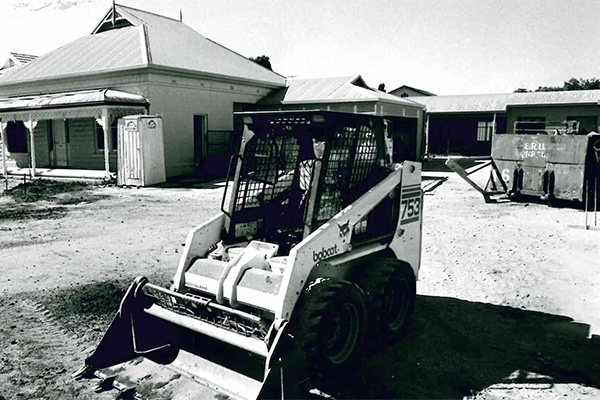
Supported employment centre opens in Alberton
In 1999 new facilities for Port Business Partnerships and Port Supported Employment Projects (now Wesley Social Enterprises) were developed on land adjacent to the George Martin Centre in Alberton.
This was the Mission’s first purpose-built Mental Health Employment Service and was opened by Minister of Human Services the Hon Dean Brown on 18 May.
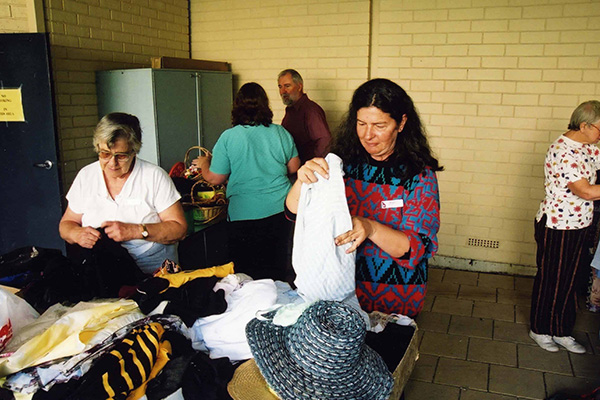
New Family Centre opens on Dale Street
In 2000 the Mission’s child care building at 58 Dale Street, Port Adelaide, was converted into a centre for family services and a hospitality training café for unemployed people.
Child care services concluded at the site in December 1999 due to funding changes and reduced demand.
The new Family Centre building was officially opened in August 2000 by Minister for Human Services Dean Brown, replacing crowded facilities at 36 Dale Street.
The new premises became the hub for a range of services supporting low income families and people with complex needs.
In its first year, the centre fulfilled more than 6000 requests for food and clothing.
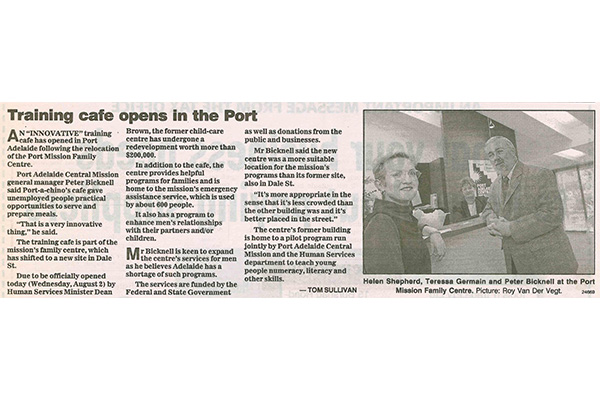
Training café opens
The Port-a-Chino’s Training Café opened at the Mission’s new Family Centre on Dale Street in 2000, providing hospitality qualifications for people on the pathway to work.
The hospitality training café offered training and work experience predominantly to young participants of the Commonwealth Government’s work for the dole program.
By the time it closed in 2002, Port-a-Chino’s had found paid employment for more than half of its 200 participants.
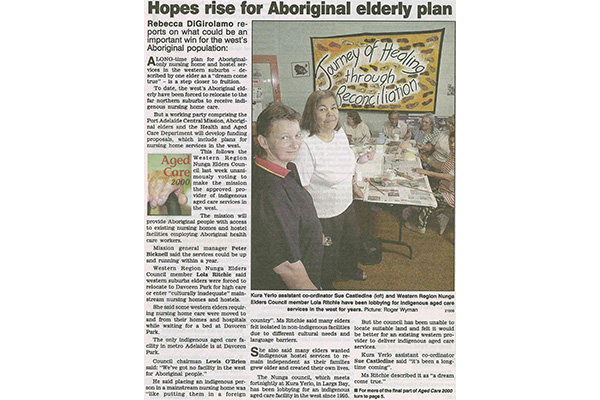
Partnership with local Aboriginal community formalised
The Mission signed a Memorandum of Understanding in 2000 with the Western Region Nunga Elders Forum to shape future relationships with the Aboriginal community.
The partnership later led to Aboriginal people receiving priority admissions into the Mission’s Regency Green Multicultural Aged Care facility.
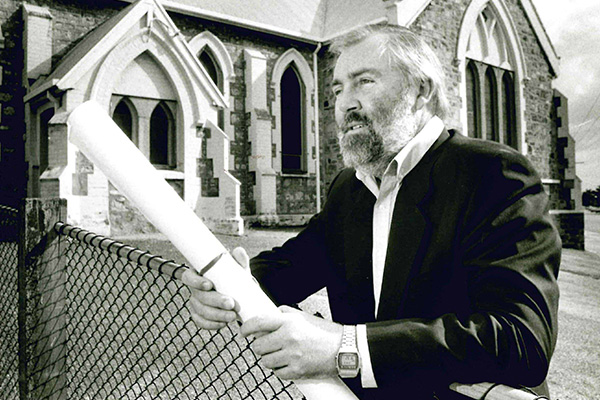
Bicknell appointed as first CEO
Peter Bicknell was appointed Chief Executive Officer of the Port Adelaide Central Mission in October 2001.
Bicknell started as Community Services Director in 1993, before taking on the role of General Manager in January 1997.
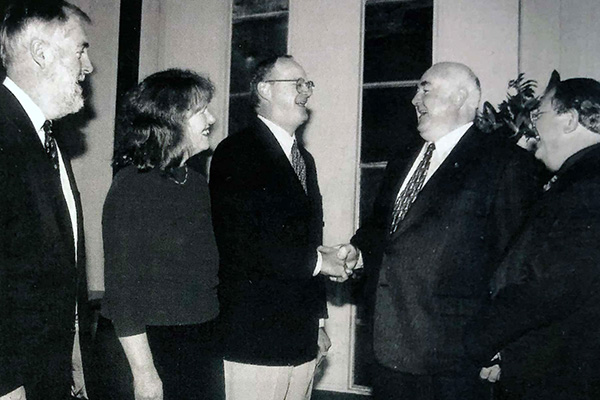
Partnership in Mission
In 2002 the boards of the Adelaide and Port Adelaide Central Missions entered into a ‘Partnership in Mission’ based on their common heritage, values and goals.
Working together as agencies of the Uniting Church, the Missions agreed to cooperate in service planning, staff exchanges and tendering.
The Port Pirie Central Mission and Wesley Uniting Mission at Bowden joined the partnership shortly after.
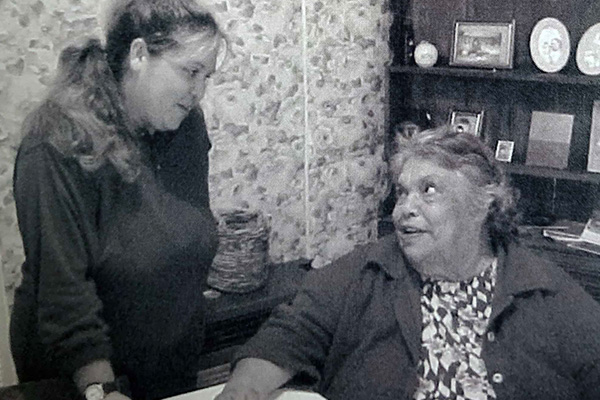
Memorandum of understanding signed with Aboriginal elders
In 2001 the Mission entered a new era of partnership with the Aboriginal community, signing a Memorandum of Understanding between PACM and Aboriginal Elders.
The document set out the basis of mutual respect and cooperation which would underpin their work together.
The Memorandum was signed by Mr Lewis O’Brien, Chair of the Western Area Aboriginal Elders, and Port Adelaide Central Mission Superintendent Reverend Don Catford.
The creation of a new home-based Community Care service for frail older Aboriginal people soon after was a practical expression of the Memorandum of Understanding.
Other initiatives included the Families Becoming Stronger program which offered family support, with input from local elders, and a range of community agencies.
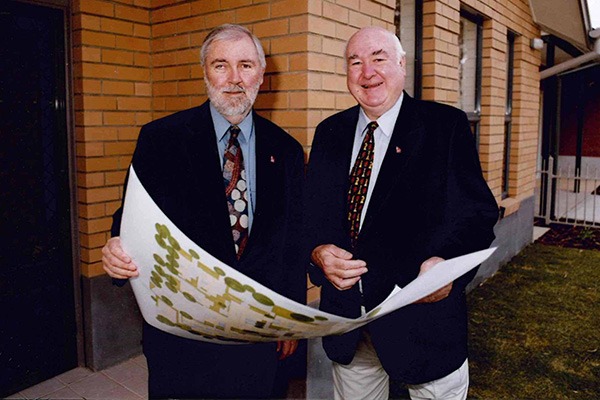
Aged care development begins in the north
The increasing demand for aged care services in the northern suburbs led the Mission to develop Hawksbury Gardens Aged Care in Salisbury North.
The residential facility and accompanying Independent Living Units were officially opened in September.
Meanwhile, in 2001/02 the Westminster Hostel was demolished to make way for a new 64 bed aged care facility.
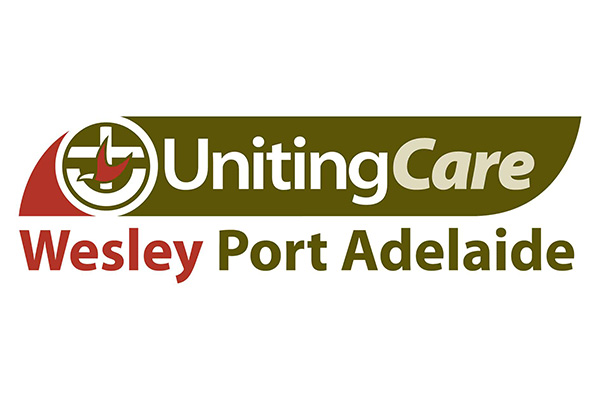
Mission becomes UnitingCare Wesley
In 2003 the Port Adelaide Central Mission officially became UnitingCare Wesley Port Adelaide (UCWPA) as part of the ‘Partnership in Mission’ with the three other major Uniting Church Missions.
They each adopted a common logo and name ‘UnitingCare Wesley’, which was launched by the Governor of SA, Marjorie Jackson-Nelson, at a function in Glenelg on 14 October.
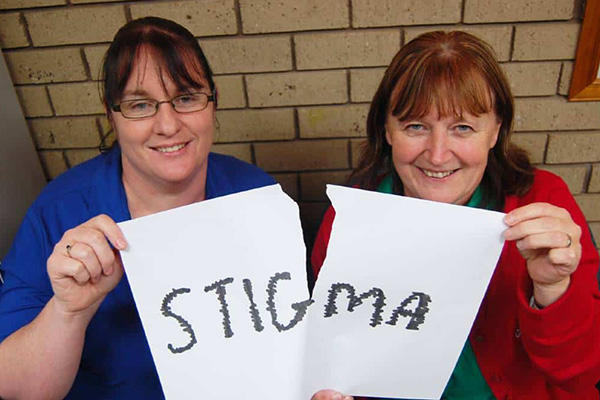
Mental Health expansion continues
In 2003 UCWPA expanded its community mental health across the Whyalla region and South Australia’s South East country.
In the 2002/03 financial year, 319 people were supported through a range of mental health programs.
Meanwhile, in 2005 UCWPA developed a program to provide psychosocial supports for people seeing a GP for clinical follow up.
A partnerships between SA Mental Health and Divisions of General Practice, the program addressed a significant service gap.
It was initially offered in the western suburbs and grew to include Adelaide’s south.
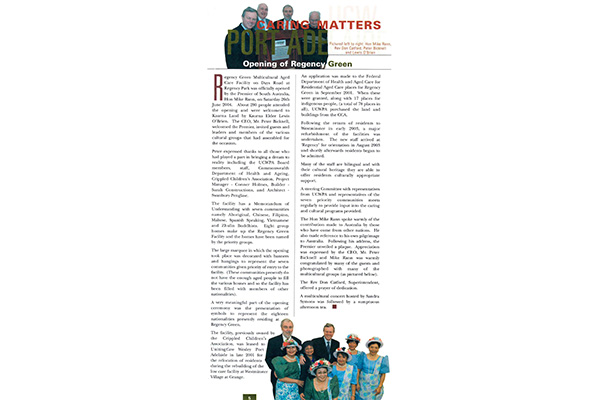
Multicultural aged care site launched
In August 2003 UCWPA opened Regency Green Multicultural Aged Care following a significant refurbishment of the site, previously occupied by the Crippled Children’s Association.
Located at Regency Park, the facility had a Memorandum of Understanding, giving priority access to Aboriginal, Maltese, Spanish speaking, Chinese, Vietnamese, Zhulin Buddhist and Filipino communities.
A pioneer in multicultural aged care, the facility was officially opened on 26 June 2004 by Premier of South Australia, the Hon Mike Rann.
A strong representation of bilingual staff and a steering committee with representatives of the seven communities ensured the delivery of culturally appropriate care and support.
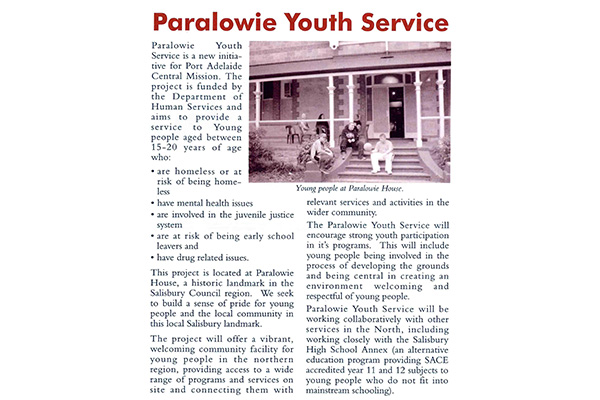
Paralowie Youth Service opens
In 2004 the Mission launched the Paralowie Youth Service to support young people in the northern suburbs facing barriers to employment, education, training and wellbeing.
The service offered a wide range of programs to youths at-risk of homelessness, drug-related issues, incarceration, mental health concerns and being early school leavers.
Opened in March by Premier Mike Rann, the Paralowie Youth Service continues to operate from Paralowie House.
The Mission also launched Western Connections, a program to support young people with drug issues who were at risk of entering the juvenile justice system.
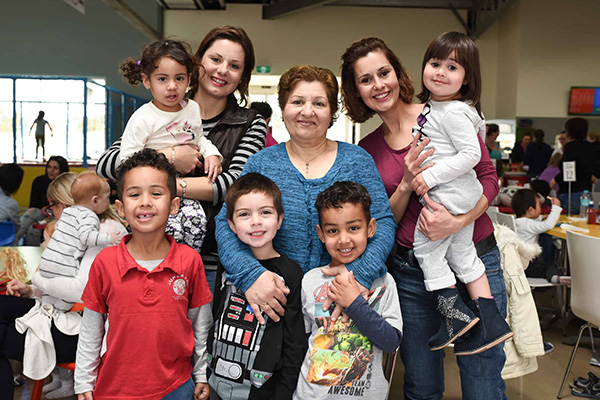
UCWPA leads Communities for Children program
In 2004 UCWPA was appointed to lead the Federal Government’s flagship family program, Communities for Children.
Communities for Children was introduced to support the wellbeing of families and health and early development needs of young children.
Working collaboratively with families and other organisations, a range of activities were developed to support families across Adelaide’s north and west.

No-interest loans ease financial strain
With support from the Wyatt Trust, UCWPA’s Family Centre was able to offer financial counselling and No Interest Loans to local people in need.
This became an integral way to support families and individuals on low incomes to buy household items and educational essentials they could otherwise not afford.
Today No Interest Loans are delivered in partnership with Good Shepherd Microfinance, the National Australia Bank and Department of Social Services.
Mental health lived experience appointments an SA first
In a first for SA, UCWPA appointed two people with a lived experience of mental illness to be Consumer Consultants in 2006.
The appointments recognised the importance of having representation of people with a lived experience in the mental health workforce.
Lived experience representation has continued to be a significant focus for the organisation and has resulted in; improved service planning and delivery.
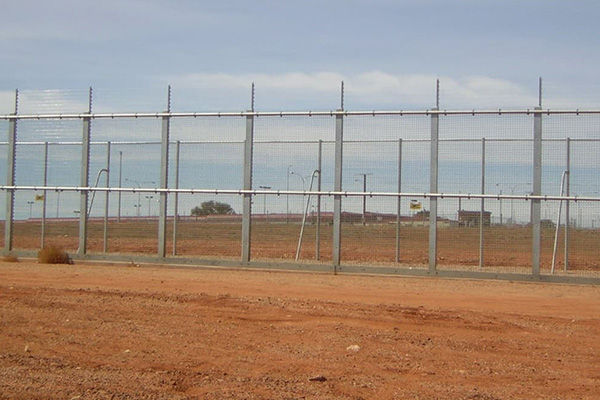
UCWPA delivers asylum seeker support program
In 2006 UCWPA played a lead role in supporting the complex and significant mental health needs of asylum seekers exiting Baxter Immigration Detention Centre.
From accessing housing, legal, and medical services to community familiarisation, developing daily living skills, and establishing education links, UCWPA worked with other organisations to provide advocacy and non-clinical psychosocial support to assist refugees to recover and rebuild their lives.
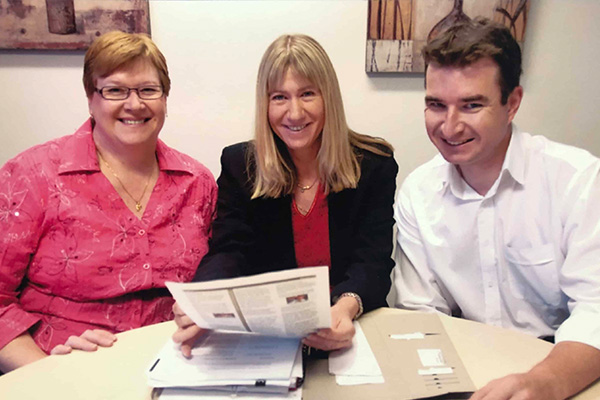
Changing of the guard
In December 2006 Peter Bicknell retired from his role as Chief Executive Officer of Uniting Care Wesley Port Adelaide, taking up the role of Board Chair.
UCWPA welcomed Libby Craft as its new Chief Executive Officer.
Libby was well acquainted with UCWPA, having held several senior management positons within the organisation since 1996, most recently as Deputy CEO.
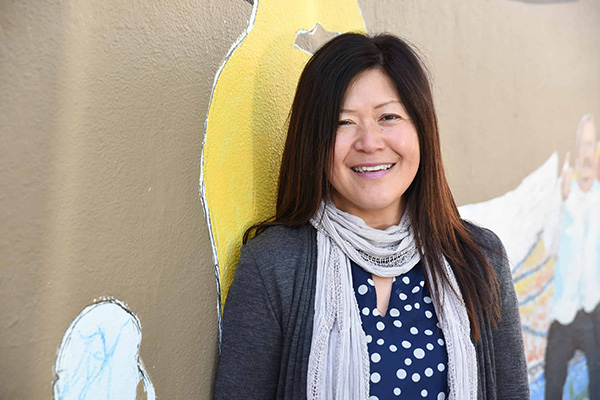
Mental health services expand to the south
In 2008 UCWPA expanded its mental health services to the southern suburbs of Adelaide, delivering the Federally funded Personal Helpers and Mentors Program (PHaMS).
PHaMS is a psychosocial support program for people with mental distress who are unable to access mental health specific services.
In this same year, mental health services were also expanded to northern country, delivering the Federally funded Day to Day program (D2D).
D2D provided community and recreational activities for people in mental distress unable to access mental health specific programs.
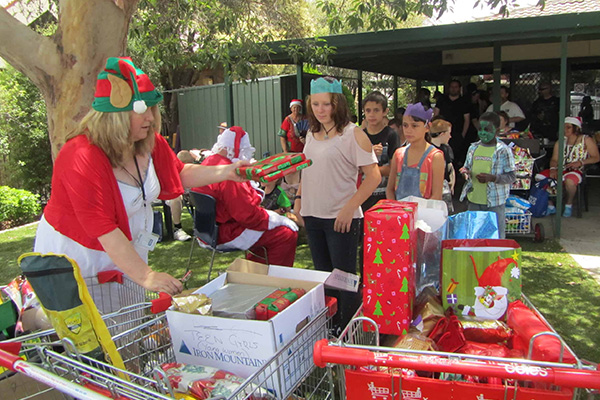
Christmas lunch provides companionship
In 2009 UCWPA held its first Christmas lunch in Port Adelaide for people who would otherwise have spent Christmas Day alone.
The free lunch provided companionship and celebration for 70 people in need.
A group of 30 volunteers dedicated their time to support the lunch, which went on to become a staple on UCWPA’s annual events calendar.
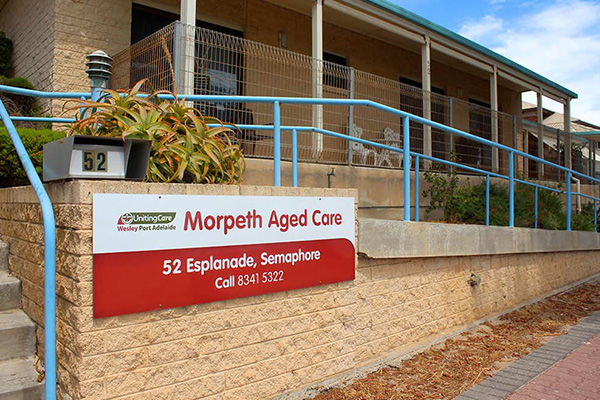
Semaphore aged care facility opens
Management of Semaphore’s Morpeth Nursing Home was transferred to UCWPA in December 2010.
Located on the Esplanade, the newly named Morpeth Aged Care facility provided a home to 34 residents.
Morpeth closed in October 2016 following the relocation of residents to UCWPA’s newly redeveloped Wesley House Aged Care facility.
Mental health services expand in country SA
In July 2011, UCWPA expanded its presence to Mt Gambier, with the successful tender for an Intermediate Care Facility.
The facility was delivered in partnership with the Mount Gambier Hospital, South East Mental Health and Country Health SA.
In 2017, a mental health service site was also established in Port Pirie.
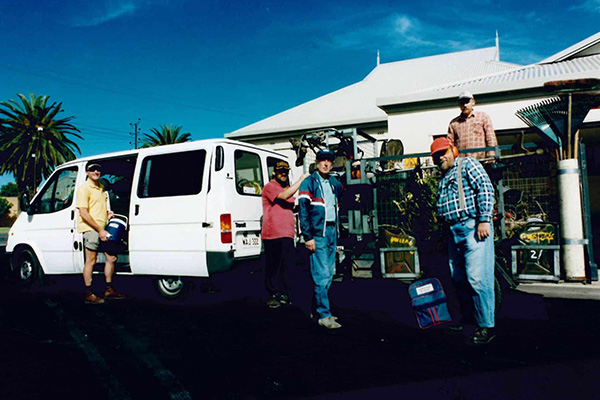
Wesley Social Enterprises launched
Wesley Social Enterprises (WSE) was established in 2011, providing supported employment to more than 100 people living with a disability.
WSE brought together the former Port Business Partnership and STEP Enterprises into a single business offering commercial cleaning, sewing, gardening, car washing and workshop based services across the western and northern suburbs of Adelaide.
Officially opened by Minister for Mental Health, the Hon Mark Butler in April, WSE also incorporated the Kingston Supported Employment Service (KSES) which had been operating for over 20 years.
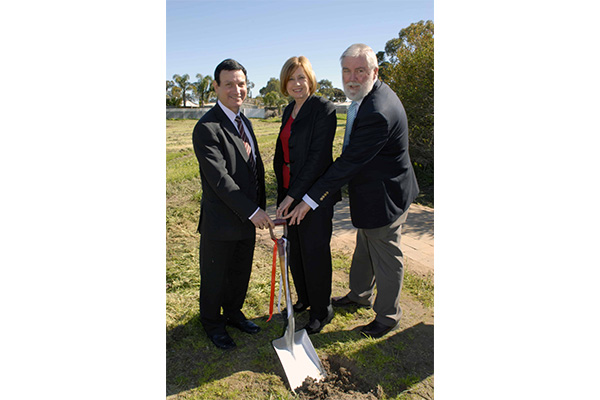
Portway Housing reaches major milestone
Portway Housing Association reached a milestone of 300 properties in 2011, following the development of a $3 million housing development at Para Vista.
The properties provided affordable accommodation for low income families and individuals.
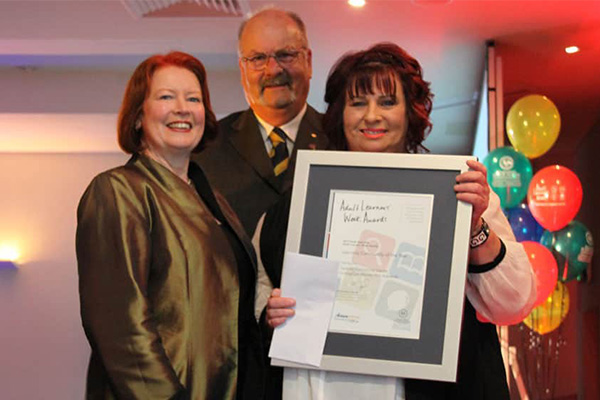
Taperoo Community Centre award
Taperoo Community Centre won the Adult Community Education Centre of the Year award, providing a range of programs, workshops and training courses for over 8000 local residents.
The award acknowledged the centre’s outstanding contribution to the local community through the development and provision of adult and community learning.
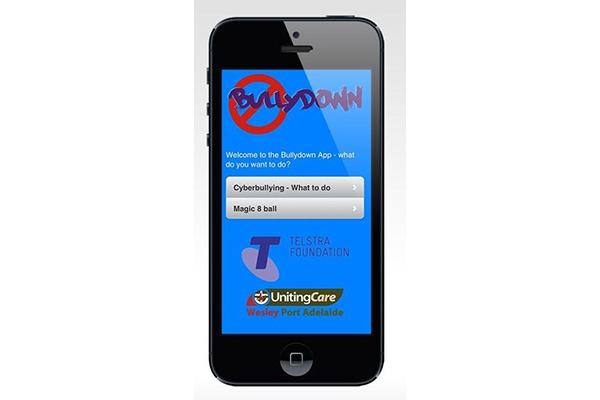
Bullydown app tackles cyber bullying
In 2012 Telstra partnered with around 30 clients from UCWPA’s Youth Services to develop a smartphone app to help teenage victims of cyberbullying get the support they need.
Called ‘Bullydown’, the app was supported by a YouTube clip and hip hop song written and recorded by a local MC.
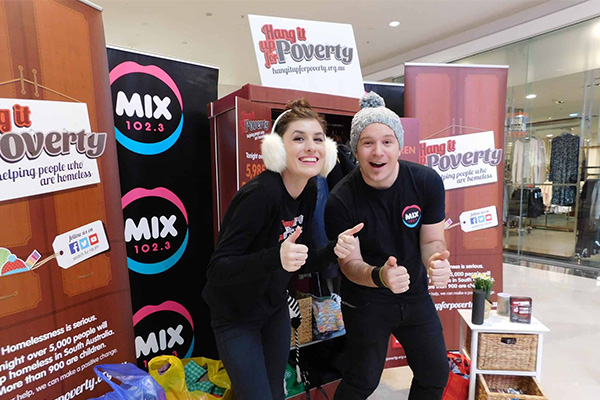
Hang it Up for Poverty campaign launched
In 2013 UCWPA launched a new poverty awareness campaign called Hang it Up for Poverty.
The campaign aimed to help homeless individuals and those requiring emergency assistance.
Money was raised for food assistance and energy vouchers, clothes and food were collected to distribute and Winter packs and sleeping bags were handed out.
Community groups, schools and businesses hosted activities to help for the appeal.
- Sleep n bag
- PAFC charity partner
- Pop up wardrobes
- Quiz night
- Sleep n bag
- PAFC charity partner
- Pop up wardrobes
- Quiz night
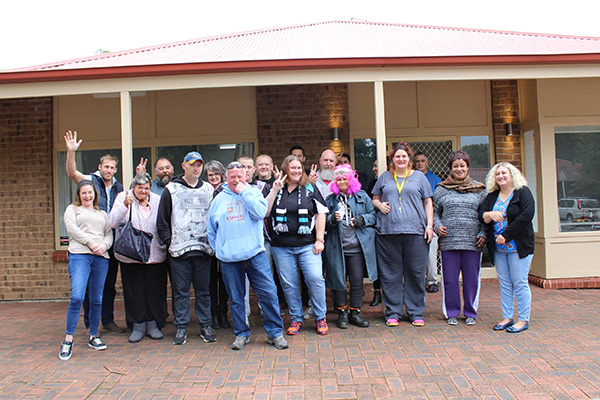
Psychosocial support service expands
In 2013, UCWPA was awarded a $23 million five-year contract to expand its Individual Psychosocial Rehabilitation and Support Service (IPRSS).
Providing support for approximately 400 people living with a mental illness, IPRSS was delivered across three metropolitan regions – west, northeast and outer south, as well as northern country.
Under the new contract the number of IPRSS clients and staff was expected to triple, making UCWPA one of the biggest community mental health providers in the state.
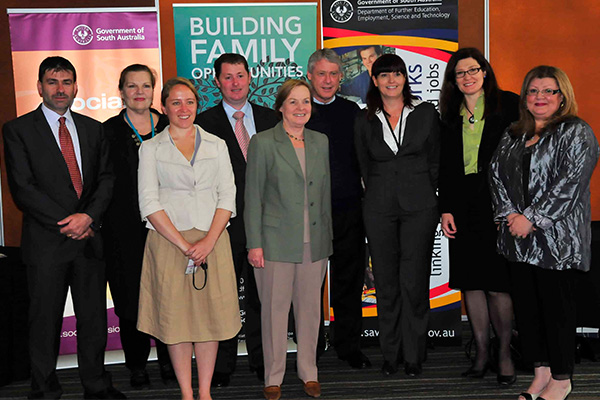
Family employment program commences in Playford
In 2014 UCWPA successfully tendered for the delivery of the state government’s new Building Family Opportunities (BFO) program in Playford.
Officially launched by Premier Jay Weatherill on 30 September, the program provides tailored support for long-term unemployed families, linking them with study and work pathways.
As at 30 June 2015, the BFO program had engaged 194 long term jobless families and helped 52 participants to gain work and a further 59 to commence training or education.
In June 2016 UCWPA was awarded a contract to deliver the government’s new BFO Families in Transition program, helping families in Adelaide’s north facing redundancies arising from industry closures.
Employment accommodation program supports remote communities
In July 2014 UCWPA was contracted to support Aboriginal people moving from remote communities to Adelaide for study or work related activities.
The Employment Related Accommodation (ERA) housing program delivered support across a range of areas, including housing, accessing education, training and employment, and day-to-day living skills.
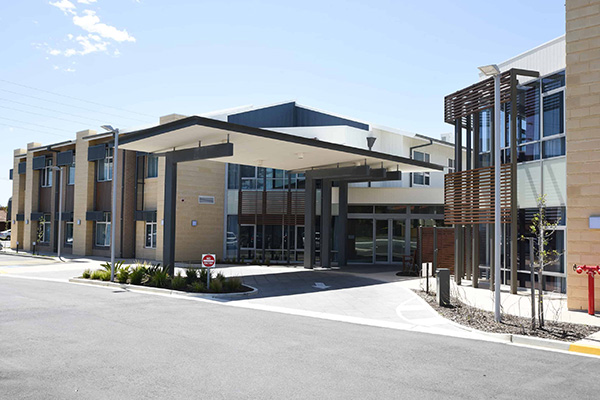
Major redevelopment of Wesley House
Residents moved into the first stage of the $40 million Wesley House Aged Care redevelopment in Semaphore Park in January 2015.
The 168-bed two-storey building on Military Road includes private bedrooms with ensuites, air-conditioning and Smart TVs.
The biggest every capital project of UCWPA to date, the redeveloped facility features an on-site kitchen, café and a specialist secure dementia wing with additional technology to support residents.
Work commenced November 2013.
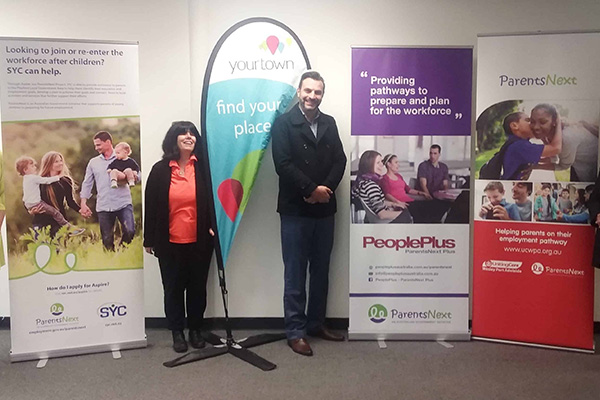
Employment program supports parents
The Australian Government announced in March 2016 that UCWPA had been selected to deliver a new program, helping parents with young children prepare for future employment.
ParentsNext assisted families living in the City of Playford to prepare to join or re-enter the workforce by the time their youngest child started school.
In 2018, UCWPA was selected to deliver the program in more areas, including Elizabeth, Gawler, Modbury, Port Adelaide, Salisbury, Taperoo, Torrensville, the Murraylands and Riverland.
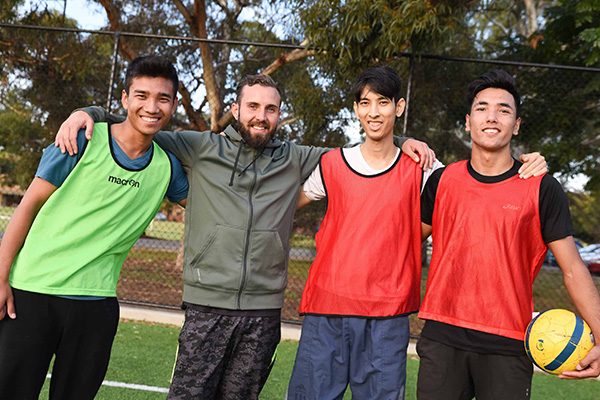
Football Life initiative reduces isolation
In February 2016 UCWPA launched Football Life, bringing young people from diverse cultural backgrounds together to reduce social isolation.
Each week dozens of 12 to 25-year-olds meet up in the Adelaide Parklands to play the World Game and forge friendships.
Adelaide City Council has helped fund the program and the University of South Australia has provided volunteers.
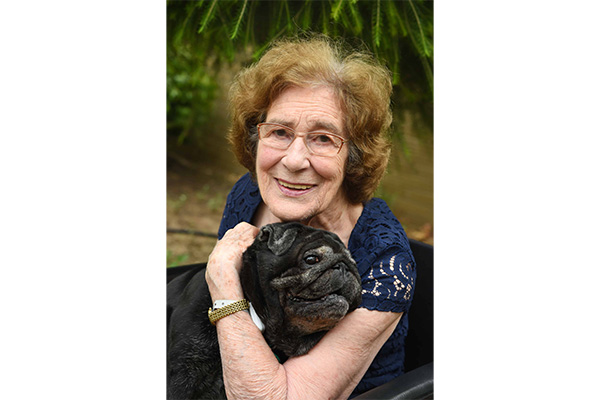
Regency Green delivers pet-friendly aged care
After implementing a program for companion animals in residential aged care with the Animal Welfare League in 2015, UCWPA launched the Pets in Residence program, providing pet-friendly options for residents moving into aged care.
The first dog was welcomed into Regency Green Multicultural Aged Care in 2016.
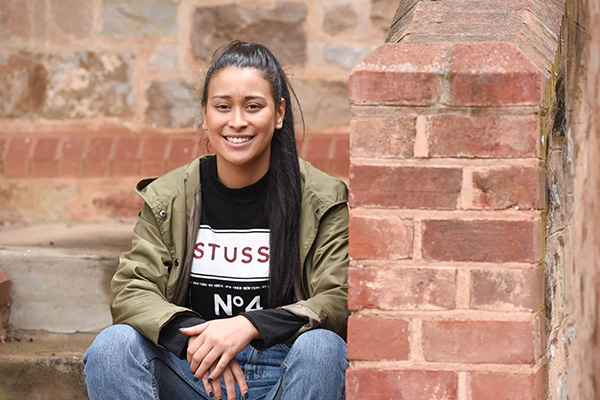
URBAN Youth Services
In 2016 UCWPA partnered with Aboriginal Family Support Services and Re-Engage Youth Services to lead the delivery of the state government’s new URBAN Youth Services program.
Funded by the Department for Communities and Social Inclusion, URBAN Youth provides early intervention and prevention services to help young people build resilience, improve their mental health, maintain finances, and reduce isolation and reconnect with education.
URBAN Youth Services continues to be delivered across metropolitan Adelaide.
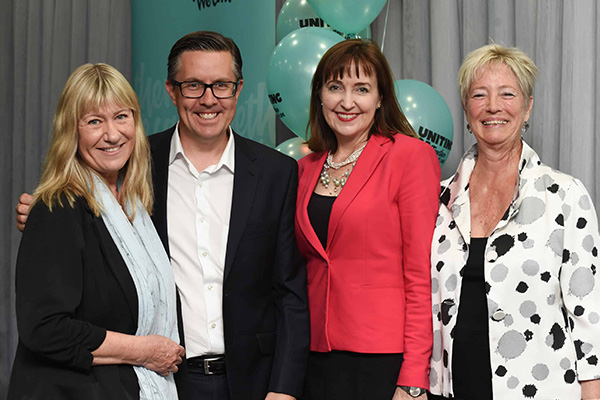
UCWPA becomes UnitingSA
In 2017 UCWPA rebranded to become UnitingSA, reflecting its growing presence across South Australia.
The new name, UnitingSA, was officially marked at a public celebration with more than 130 supporters and stakeholders on 8 November.
The organisation also became a Company Limited by Guarantee with full support of the Synod/Presbytery of the Uniting Church.
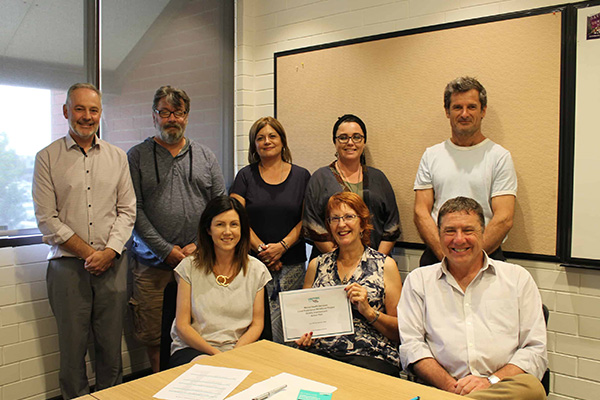
UnitingSA leads the way with Lived Experience pilot
UnitingSA was the first organisation in Australia to pilot the new NGO Lived Experience Workforce Standards and Guidelines.
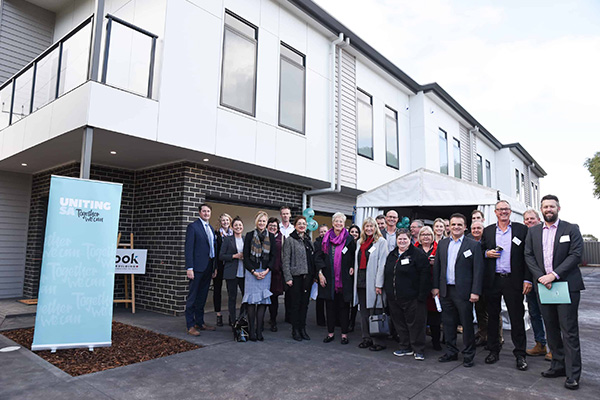
Housing developments continue in the west
In 2018 Portway Housing Association completed construction of two major housing developments, bringing its number of properties to 374.
In April Portway Housing celebrated the redevelopment of eight townhouses in Pennington, under a $1.9m project to create more affordable housing in Adelaide’s west.
In June, Portway launched its Kidman Park housing development, which replaced two outdated units with six three-bedroom townhouses.
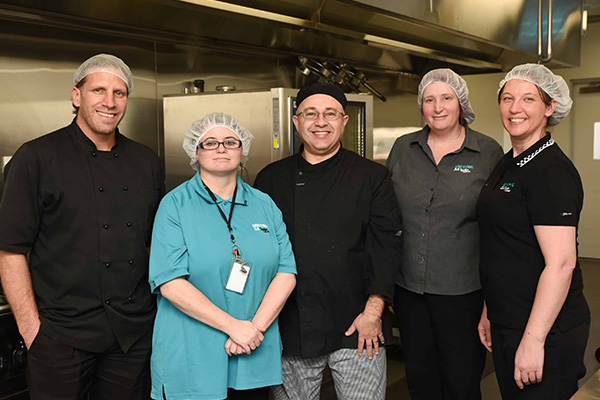
New-look Hawksbury Gardens
In 2018 Hawksbury Gardens Aged Care underwent a major expansion, adding 26 new bedrooms, a fresh cook kitchen, sitting areas, laundry and dining room.
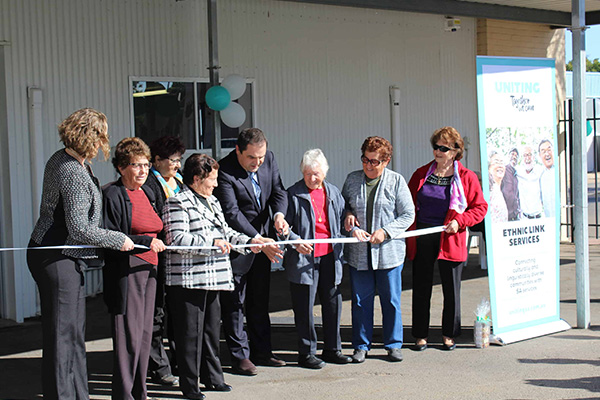
Riverland welcomes Ethnic Link Services
In July 2018 Ethnic Link Services celebrated the launch of its new premises in Renmark.
The service had supporting older people in the Riverland for over 20 years, and moved from the Renmark Paringa District Hospital to a new office on Murtho Street.
Today Ethnic Link Services operates across metropolitan Adelaide, the Riverland and Whyalla, assisting people from over 50 different countries of birth and in over 25 languages.
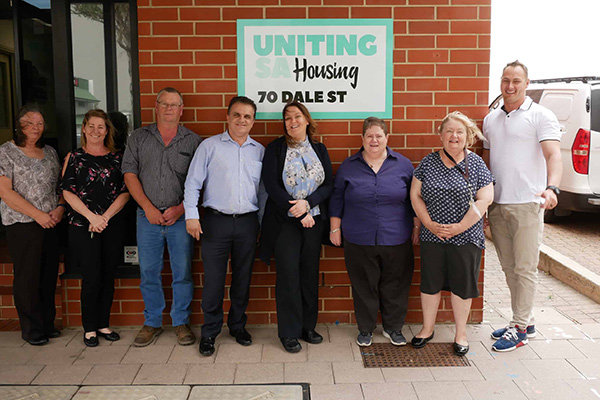
UnitingSA Housing
In October 2018 Portway Housing Association began a new chapter, changing its name to UnitingSA Housing Ltd.
The name better reflects its presence beyond Port Adelaide and builds on the long-standing relationship between UnitingSA and Portway Housing.
UnitingSA Housing and UnitingSA also became companies limited by guarantee.
UnitingSA Housing continues to be a trusted Community Housing agency, striving to provide affordable housing to those on low to moderate incomes who have difficulty securing housing in the private rental market.
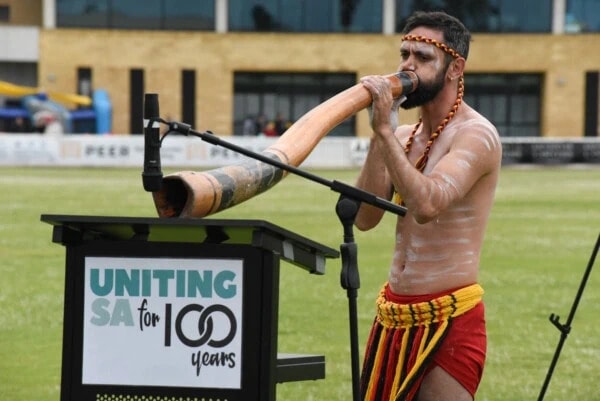
Centenary commemorated
In 2019 we commemorated UnitingSA's centenary, with events staged across metropolitan and regional South Australia, including our pinnacle event - a huge birthday party at Alberton Oval, where we celebrated with hundreds of members of our community.
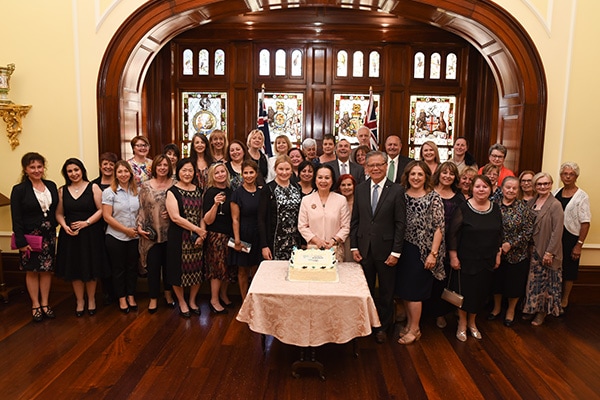
Ethnic Link Services milestone
In 2019, Ethnic Link Services celebrated 30 years of specialist support for older South Australians from refugee and migrant backgrounds. To mark the milestone, His Excellency the Honourable Hieu Van Le AC, Governor of SA, and Mrs Le hosted a reception for Ethnic Link Services staff, clients and supporters at Government House on October 29.
UnitingSA continues to offer cultural and language support for vulnerable or isolated people from culturally and linguistically diverse backgrounds.
UnitingSA continues to offer cultural and language support for vulnerable or isolated people from culturally and linguistically diverse backgrounds.
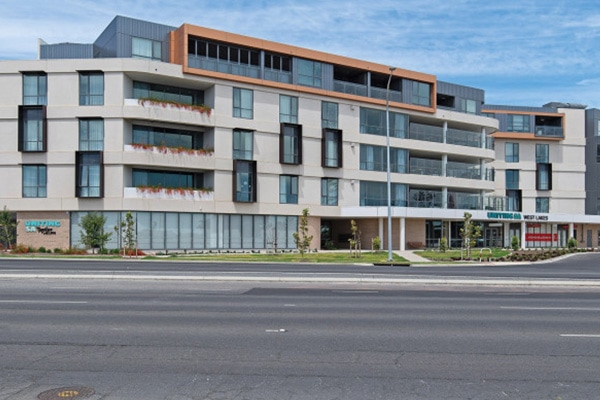
West Lakes aged care opens
UnitingSA West Lakes was opened in April 2021, and is an innovative $50m aged care development putting older people at the heart of a vibrant community.
This five-storey development located at 1 Charles Street, West Lakes, features residential aged care, premium retirement living, allied health services and commercial outlets.
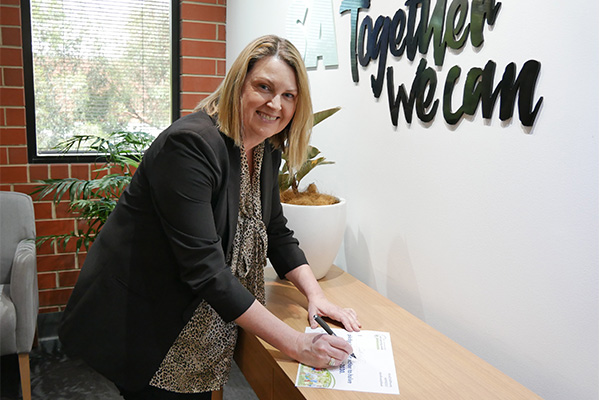
Strong leadership continues
In June 2021 we were proud to welcome our new Chief Executive Officer Jenny Hall to the UnitingSA team.
Jenny came to UnitingSA with over 20 years’ experience across the aged care, community and health sectors, including senior executive roles.
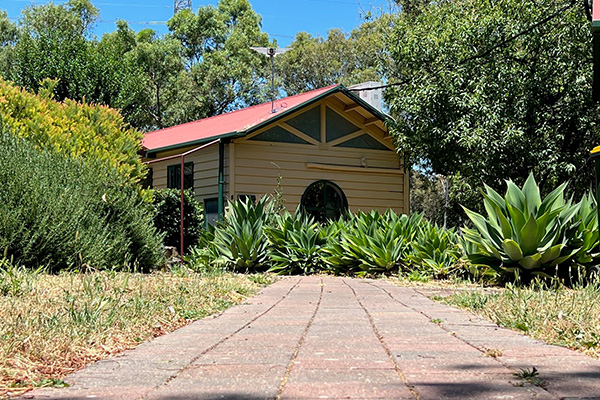
Homelessness Alliance formed
In July 2021, UnitingSA joined with seven other housing and homelessness providers to establish the Adelaide North West Homelessness Alliance (ANWHA).
The collaboration between Aboriginal Sobriety Group, AnglicareSA, Centacare, SA Housing Authority, St John’s Youth Services, The Salvation Army, Uniting Communities and UnitingSA is committed to providing support and services to young people, Aboriginal people, adults and families experiencing or at risk of homelessness across Adelaide’s north and west, extending as far as the Barossa.

Housing leads the way
In March 2022, UnitingSA Housing attained Tier 1 status through Australia’s national regulatory system, reaffirming its position as a leading provider of community housing.
This classification through the National Regulatory System for Community Housing demonstrates UnitingSA Housing’s commitment to delivering high-quality, affordable housing, and recognises its huge potential for growth.
UnitingSA Housing also became a registered Specialist Disability Accommodation (SDA) provider through the National Disability Insurance Scheme (NDIS) in March 2022, which allows the organisation to diversify its housing portfolio to meet the needs of people living with disability.
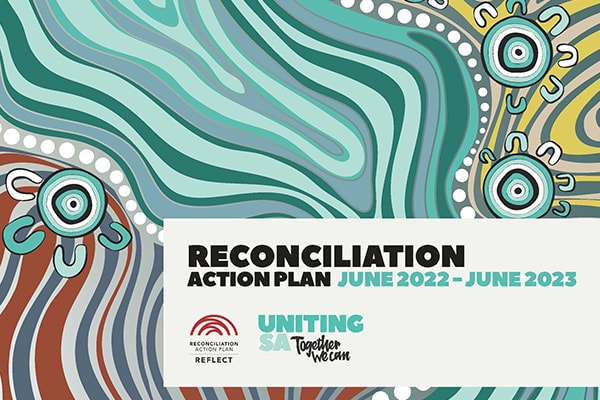
Inaugural RAP plan
UnitingSA’s inaugural Reconciliation Action Plan (RAP) was launched at our Padninthi Community Day in September 2022. This ‘Reflect’ RAP outlines our new vision for reconciliation and the steps we will take to bring this vision to life.
Our RAP builds on our long and enduring history of engagement with Aboriginal and Torres Strait Islander peoples, as well as our reconciliation journey, which began with the launch of our inaugural Aboriginal and Torres Strait Islander Inclusion Strategy in 2011. Our RAP sets out tangible actions we will take to build strong relationships, respect and opportunities, and drive lasting change.
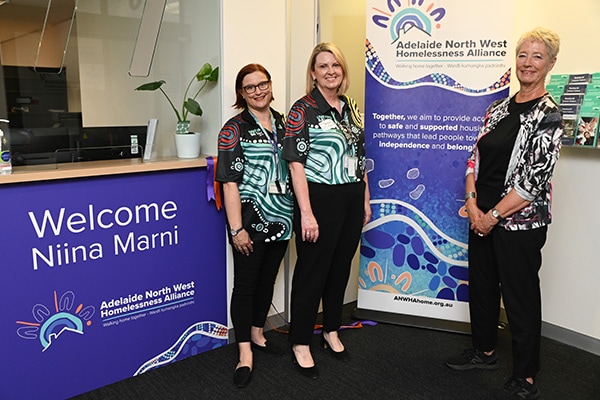
Homelessness services on the move
In March 2023, UnitingSA’s Homelessness Services in Port Adelaide moved from Lipson Street to 64 Dale Street, which had been converted into a welcoming walk-in centre for people in need of homelessness support.
The move brought our Homelessness Services into the suite of UnitingSA services on Dale Street, including Emergency Assistance, Community Housing, Family Services and Financial Counselling.
The co-location allows our teams to better collaborate to deliver a range of wrap-around supports to help people address life challenges and achieve goals.
UnitingSA’s Homelessness Services are delivered as part of the Adelaide North West Homelessness Alliance (ANWHA).
